Hey guys, welcome back! Today’s article is going to be about a trip Steven and I took back in June 2019. My family had organized a family reunion out on a beach in Montauk, and you know I can’t go all the way out to Montauk and not get some birding out of it! We decided to take a visit to Theodore Roosevelt County Park (also known as Montauk County Park) early in the morning so we could still get to my family event without anyone being the wiser.
The morning began as intended; we got up and out bright and early, camera fully charged, sunblock on, plenty of water and bug spray– it seems to be these times when everything is going so smoothly that things go wrong for us. As the GPS ushered us closer to our final destination we began noticing more and more road closures and our rout being “recalculated”. Then we began to see the first few cyclists which quickly turned into the first few dozen cyclists and we realized we were driving right smack into some sort of marathon. My stomach sank within me, as usual, my research ahead of time was not as extensive as it probably should have been. Had I missed something? Were we driving all this way just to come upon a ‘park closed for event’ sign?? On our left two police officers stood blocking off vehicle access to a park entrance and I awaited the “you have got to be kidding me” look from my husband as all the tons of cyclists turned in around the barricades. Luckily though, the voice on the GPS continued us onward, only a mile or less ahead, to the actual park entrance that we had come for. Phew!
Driving up a long paved road I gazed excitedly at the landscape beyond the car windows. Horses trotted around a large fenced in area, and rolling green lawns sprawled as far as the eye could see. The sky was crystal blue and completely devoid of clouds making everything around us glow in blazing sunlight and before even stepping out of the car we knew we were in for a very hot day. We parked in a small parking area in front of a beautiful historic building that was sadly chained off with fences for renovations. Upon further examination, I would discover that this was actually the famous Third House.
“Running from west to east, First House, Second House, and Third House were the first residences constructed on the eastern tip of Long Island after the keeper’s quarters at Montauk Point Lighthouse. They were built in the 18th century for the cattle keepers who drove horses, sheep, and cattle to graze in Montauk each year from May through November. During the summers, as many as 6,000 cattle, horses and sheep roamed pastures in Montauk, having been brought from as far west as Patchogue, a distance of approximately 70 miles (110 km).
First House was located near what is now Hither Hills State Park in Napeague and no longer exists. Second House is located at the west end of Montauk village and is now operated as a museum. Third House is used as the headquarters of Deep Hollow Ranch. In 1879 Arthur Bensen bought virtually all of the land on the eastern end from Napeague to Montauk Point. The purchase was intended to force the Montaukett off the land. Benson made Third House his residence, hoping to develop the area as a summer resort following Austin Corbin‘s extension of the Long Island Rail Road to Montauk. ” according to Wikipedia
Metallic blue Tree Swallows shot through the thick, humid air, diving and spinning their intricate dance over the green fields. A steep hill rolled down at our right letting off at a small shimmering pond, an eager Osprey circled around overhead searching for breakfast. Gatherings of horses separated on either side of the water. On the far side, they corraled at the historic Deep Hollow Ranch (the first and oldest cattle ranch in the United States, established in 1658) waiting to give rides to waiting visitors. Closer to us, a small group of horses stood lazily avoiding the heat along American Robins and drinking from barrels of water while Red-winged Blackbirds sang from their fenceposts. Steven walked on ahead searching for signs of a trail or map, I waited behind photographing a pair of energetic Northern Mockingbirds.
To our surprise and confusion, there were no signs of a trail anywhere, just rolling hills and a section of adorable cabins. I had been under the impression that we would be able to get information and a map at the nature center in the Third House upon arrival, unaware that it would be closed to the public for repair. I was starting to have that sinking “I haven’t done enough research” feeling again when suddenly way off in the distance I spotted a park worker tending to some cabins and dashed off to catch up with him. All I can say is I am very glad we were able to find someone because I seriously doubt I would have figured this out on my own! He instructed us out of the area we were currently in and down the road a short way to another area of the park where we would be able to find a nature trail that would lead us to Big Reed Pond. (which is the destination that had made me pick this park to begin with) Relieved, we loaded back in the car and off we went, some fatigue settling over us before we had even begun.
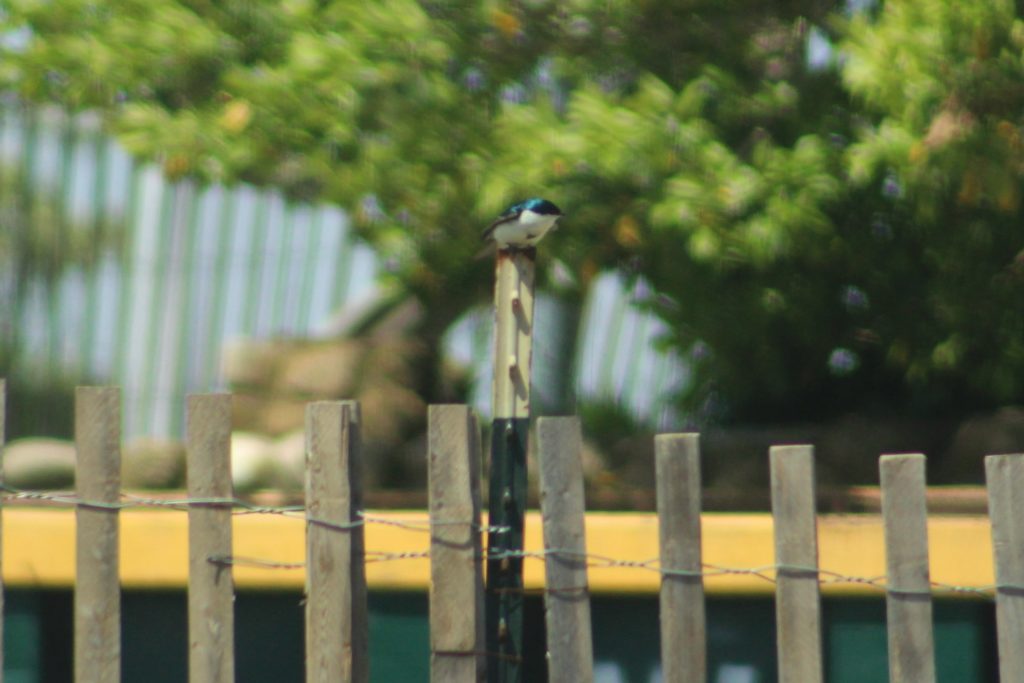

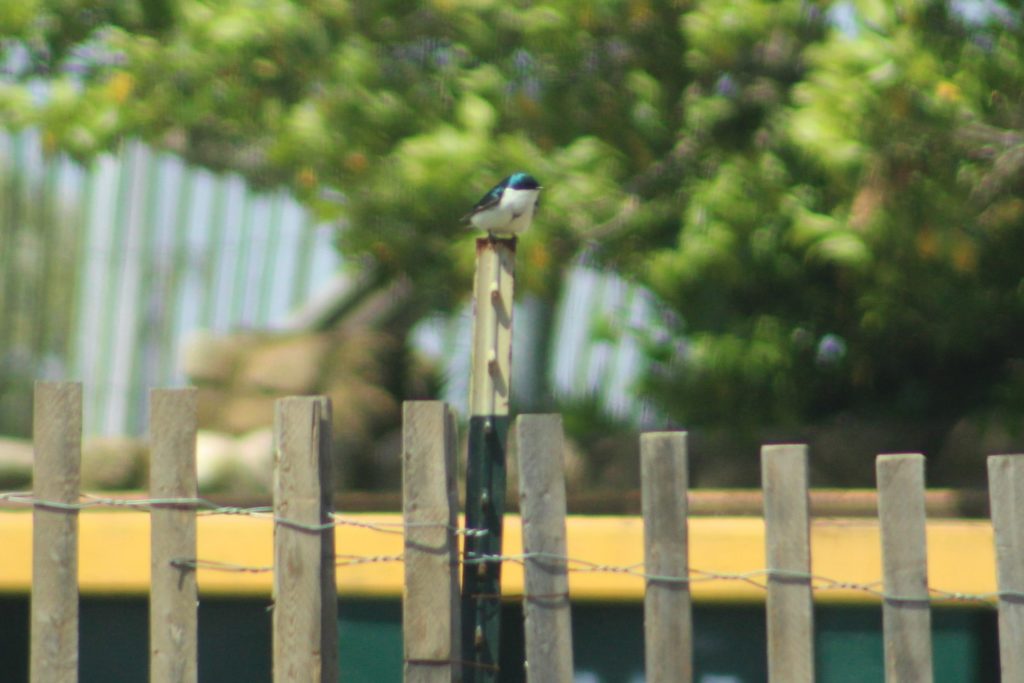

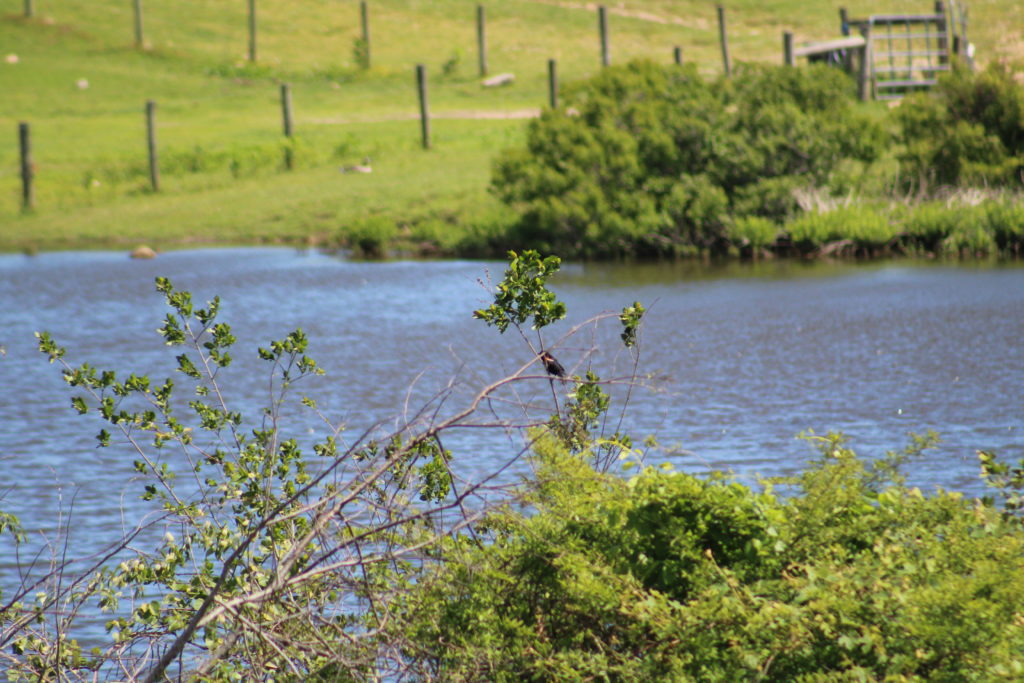
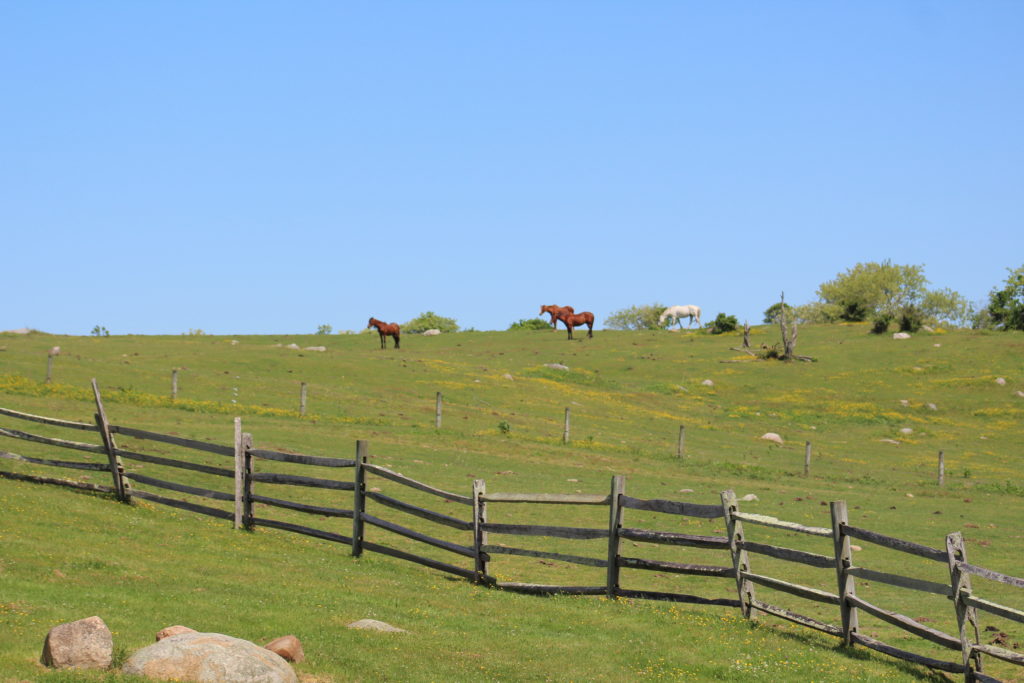
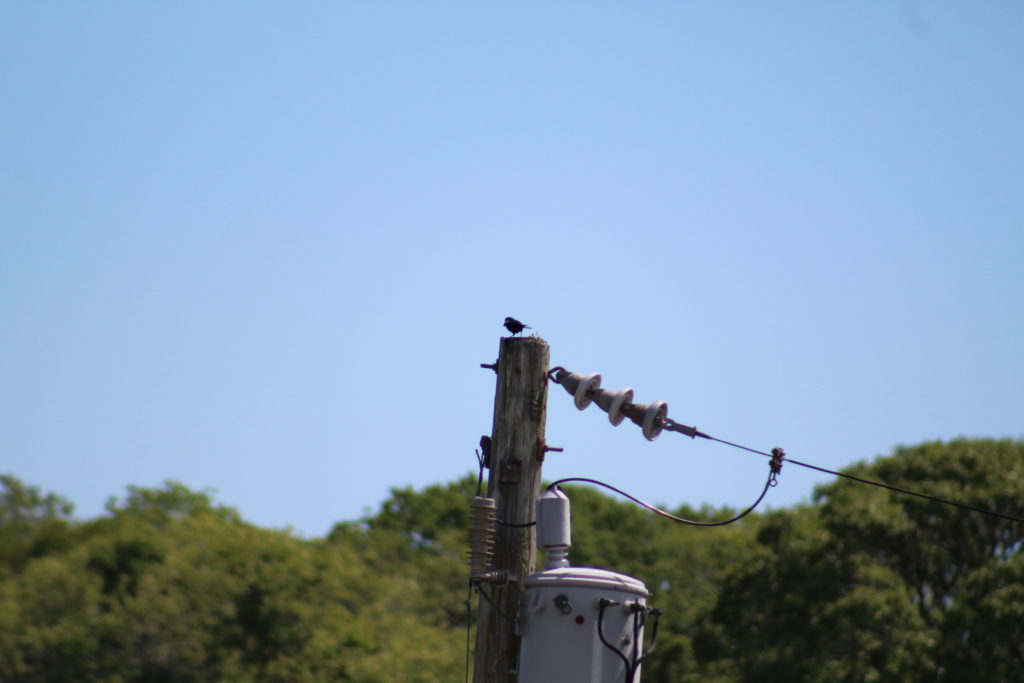
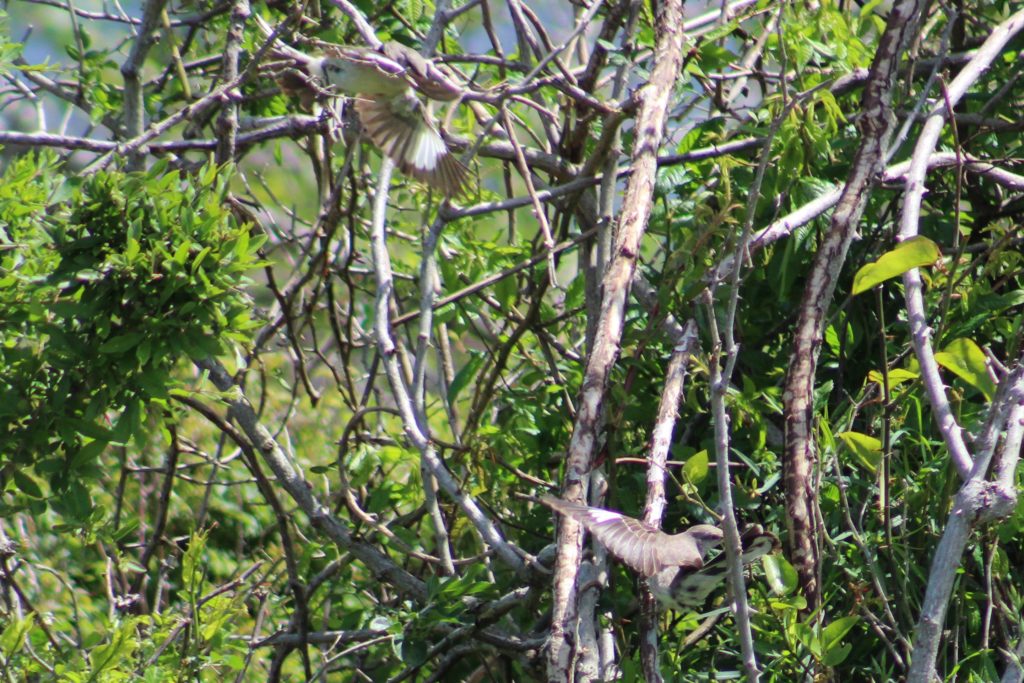

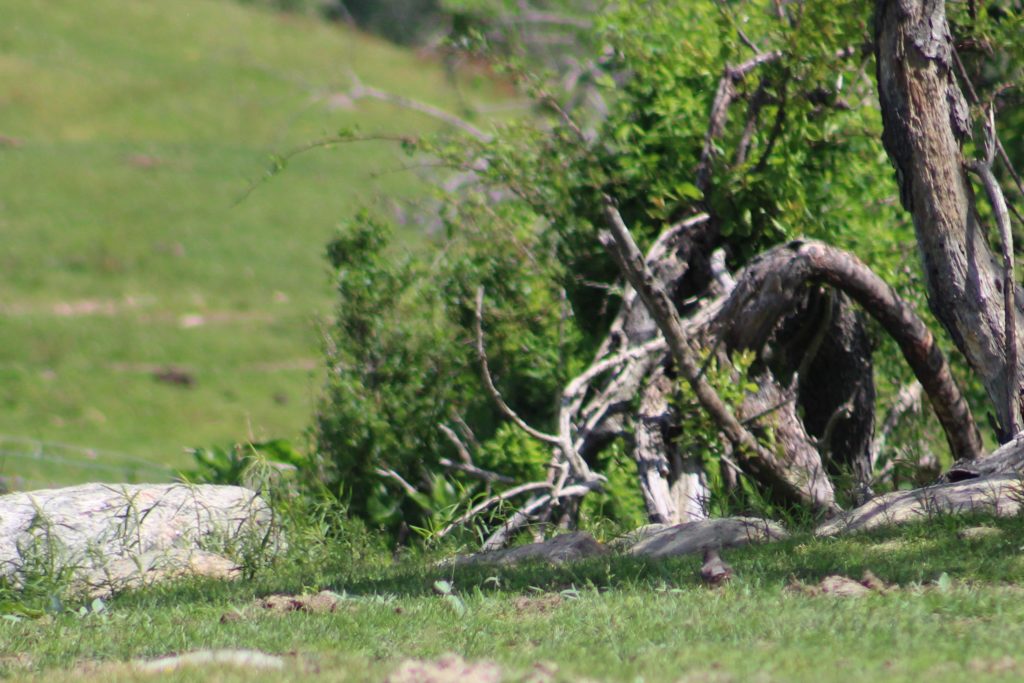

When we looked upon the entrance to the trail, and the area where we would be leaving the car (designated parking area for park visitors with room for around a dozen vehicles) we quickly decided to apply an extra few layers of insect repellent and to pack the extra camelback as opposed to simply carrying a bottle of water. Sometimes we come to parks not really knowing what to expect, we do the best we can; if it’s on a beach wear sunscreen and dress lightly, in the mountains wear boots and dress in layers but most of the time we simply don’t know until we go. I had expected, based on what I had read online, that this was a more developed park so the trail was likely easier than most, perhaps even paved. I looked into the narrow area between the dense thicket laughing to myself at how wrong I had been. Honestly, I was relieved. If you really want to see some action, chances are often better in more remote underdeveloped areas. Luckily, Steven and I are always prepared for any hiking conditions whenever we set out somewhere new. So, we rearranged our packs a bit, sprayed down with a fresh coating of Repel and set out.
After the first few feet, the trail opened up into a clearly defined path through green walls of thicket and climbing wildflowers. Eastern Towhees, not a bird I see often in large numbers until this trip, seemed to call from trees around every turn. The bright feathers of Yellow Warblers shone out like ripe lemons in the strong glowing sun bouncing off of the leaves. The shadow of a circling Osprey repeatedly fell over us as we walked along, taking in the beauty of the absolute seclusion that was this trail we found ourselves upon. It appeared as though we were the only visitors to walk these steps, which sadly is rarely the case these days, no litter or graffiti not even the sound of a barking dog.
After a while of hiking, the trail turned over from dirt to boardwalk as the ground beneath our feet quickly became more uneven and soft in a marshy area of parkland. Gray Catbirds filled low thick brambles and a lone Red-eyed Vireo hid amidst leaves in a thin tree above our heads. Hairy Woodpeckers drilled away at the scattering of trees, heavily marked with years of prior holes. An American Redstart watched on as we walked and before too much longer we were seeing the path open up to the entrance to Big Reed Pond.
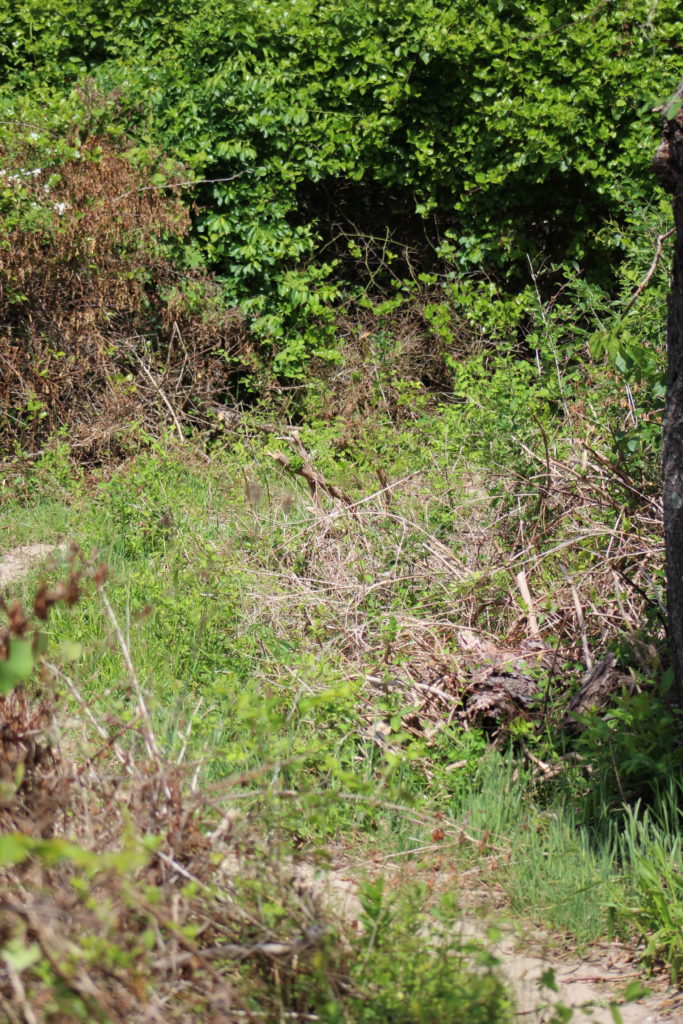
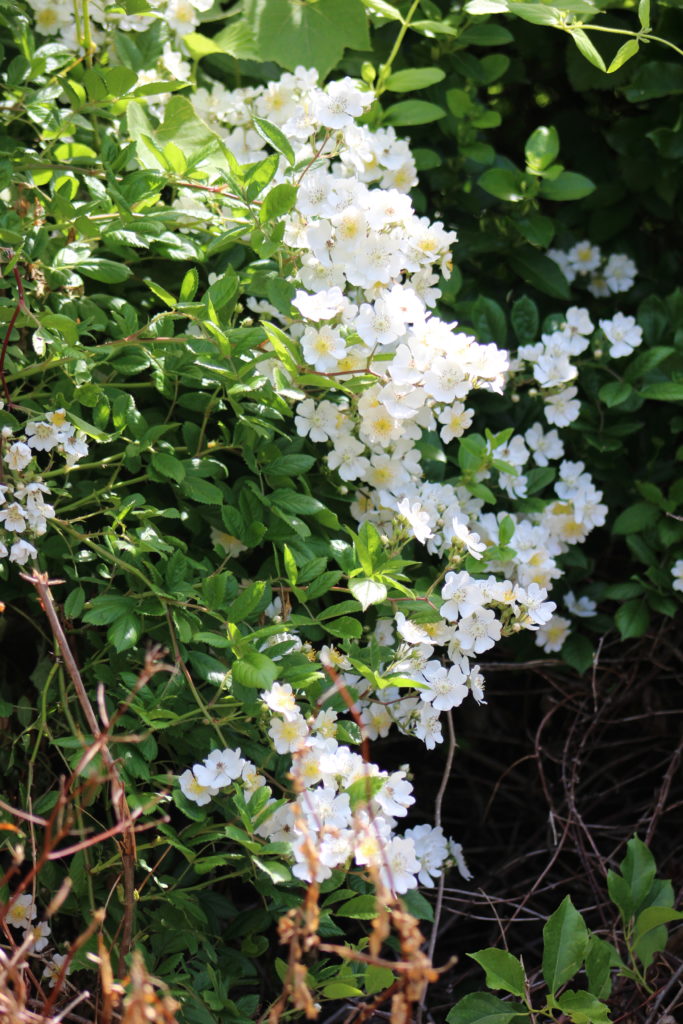


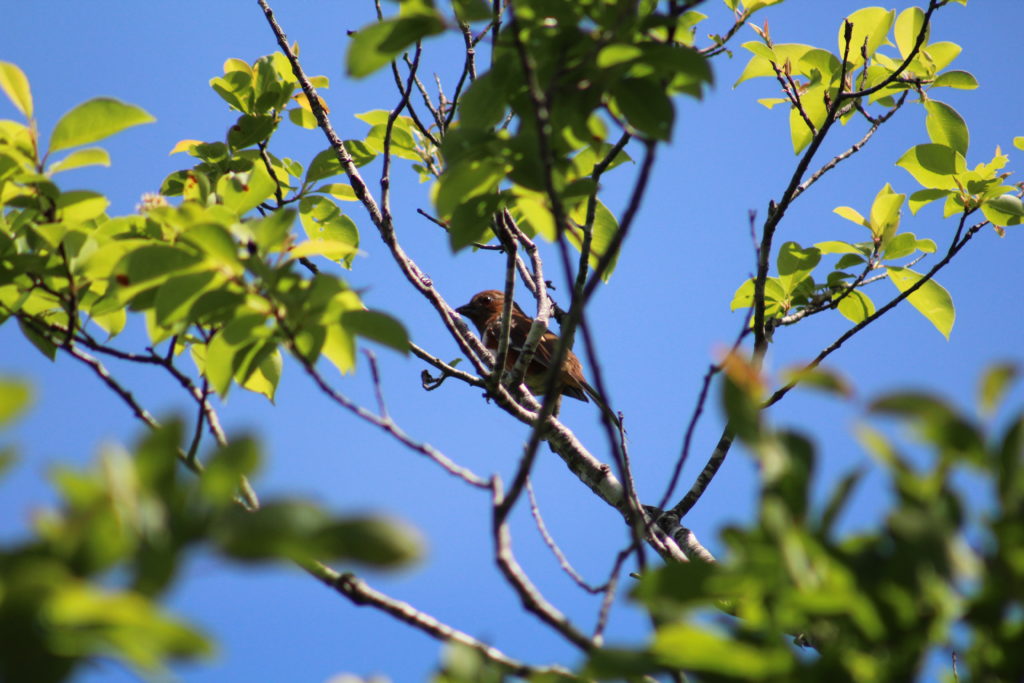
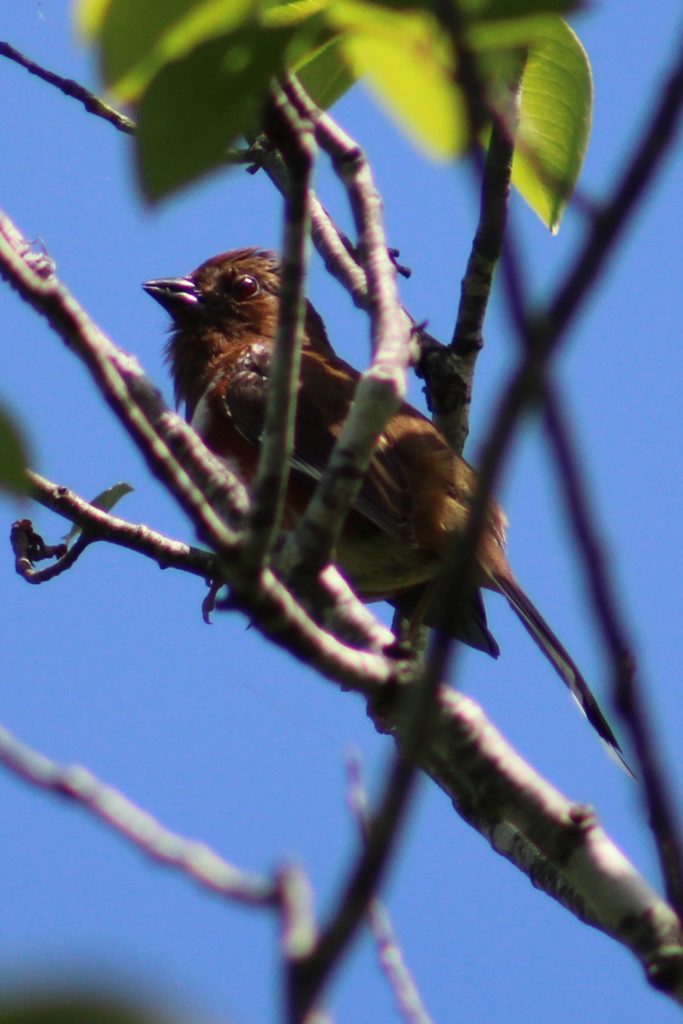
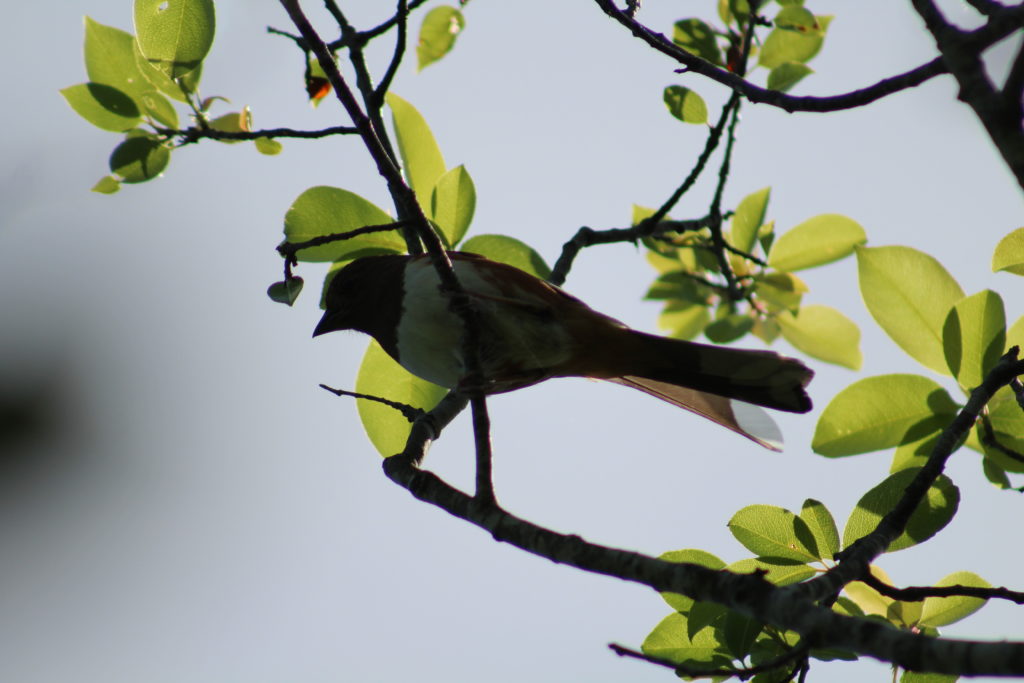
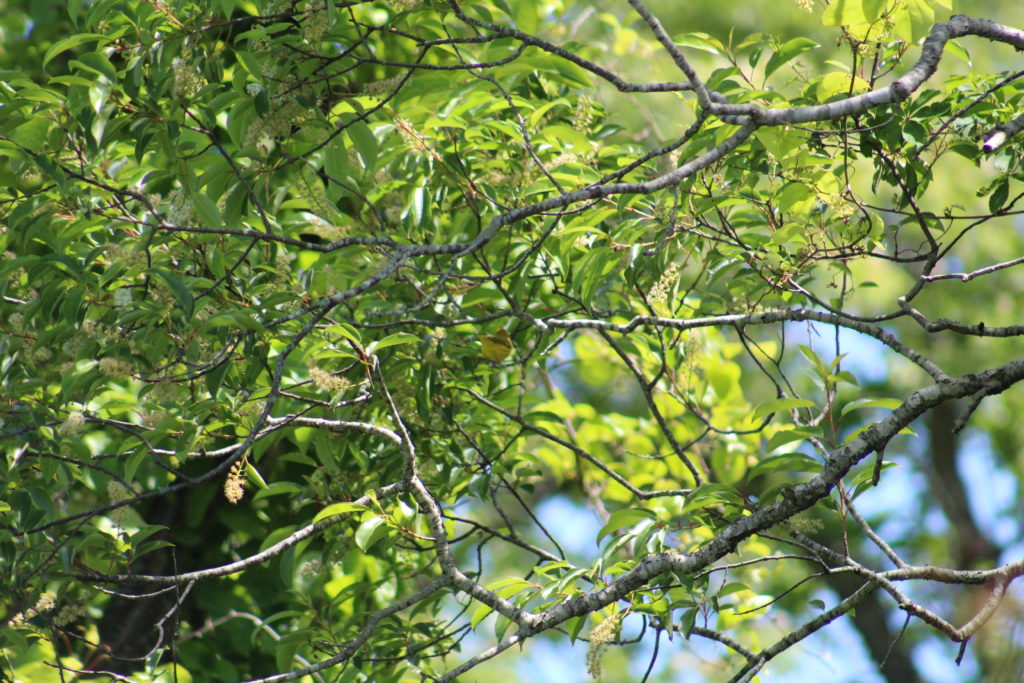
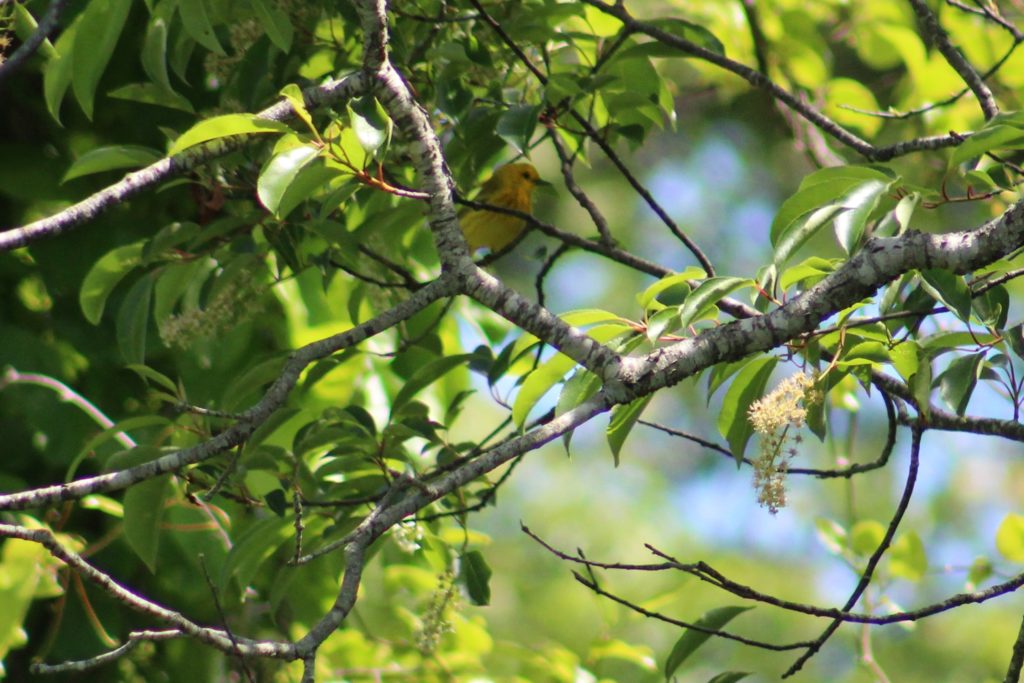
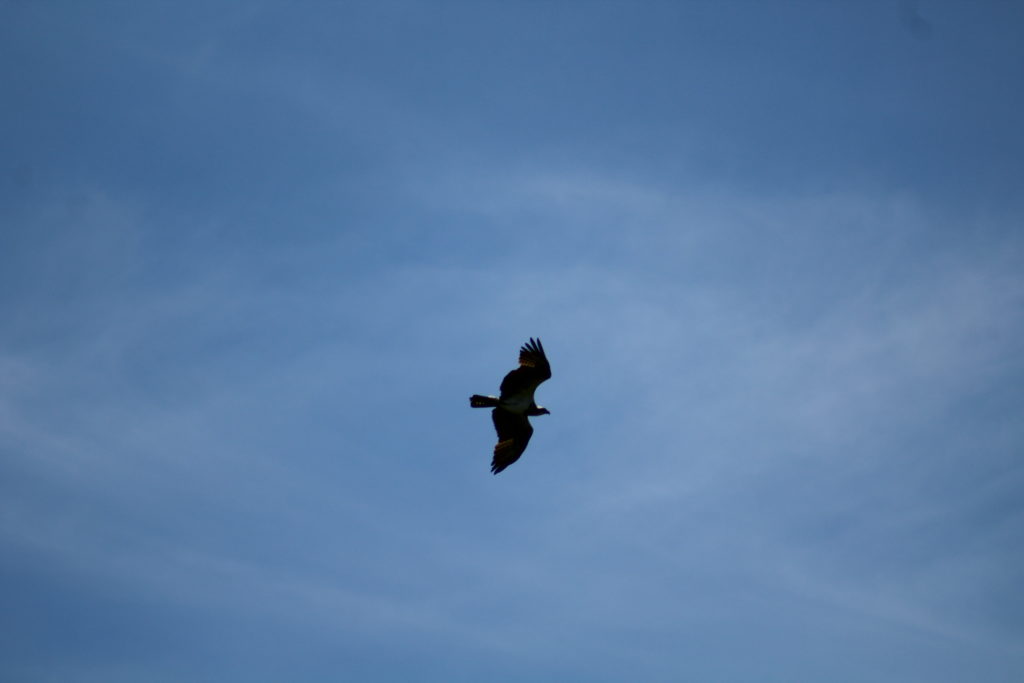

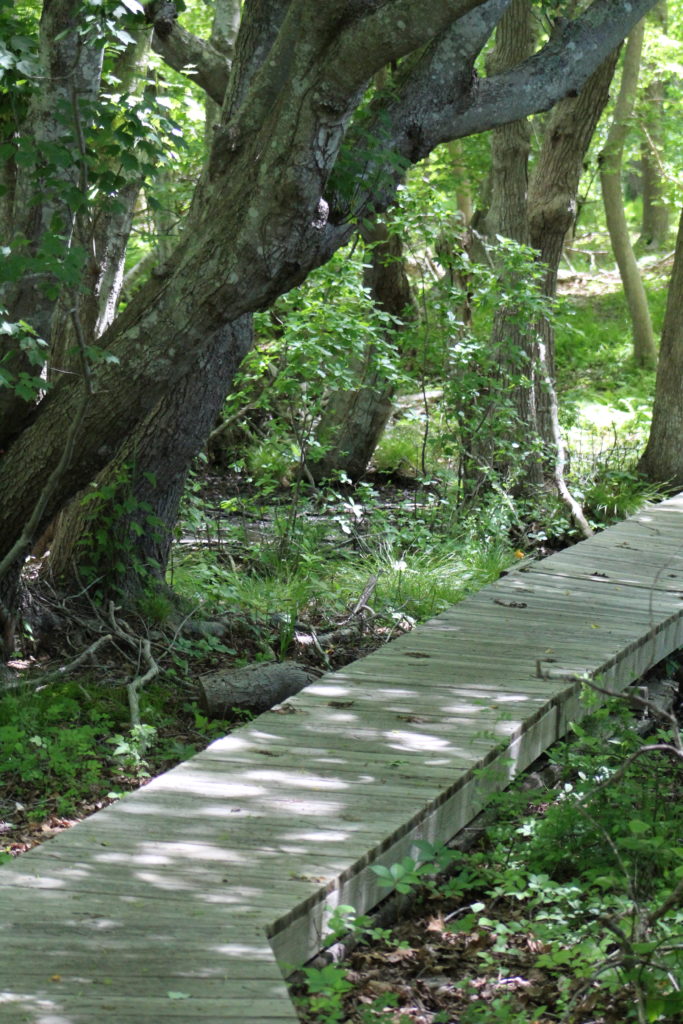
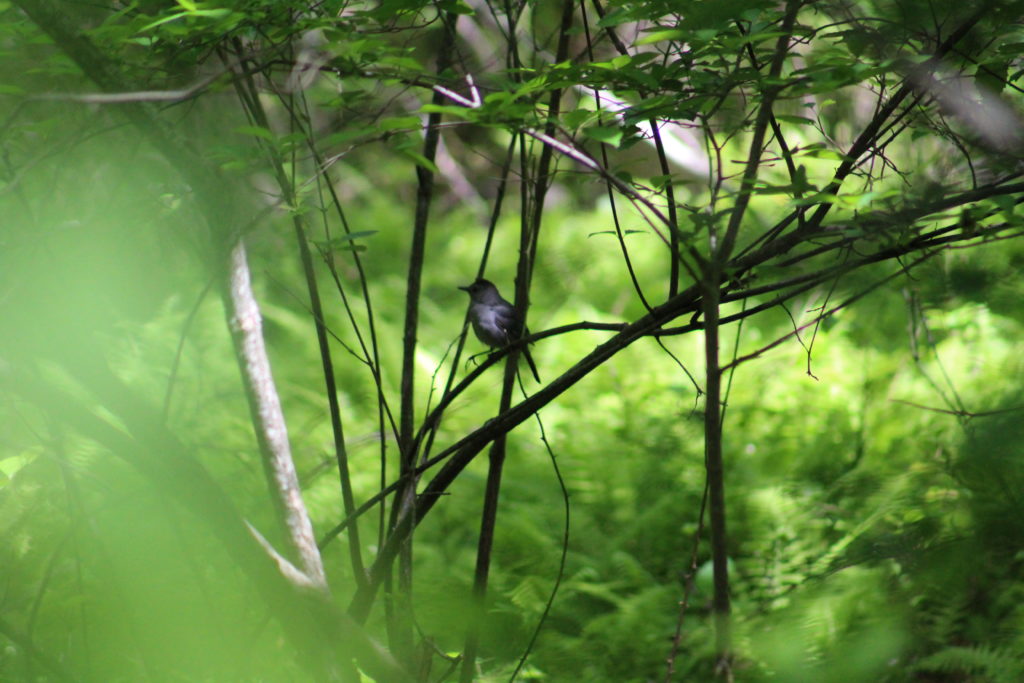
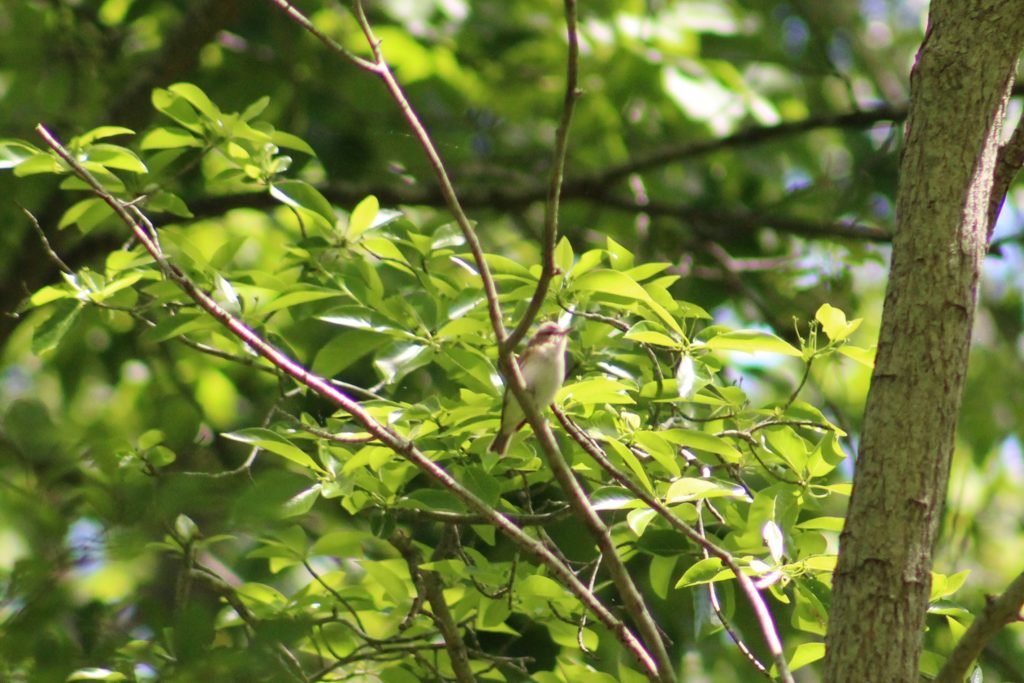
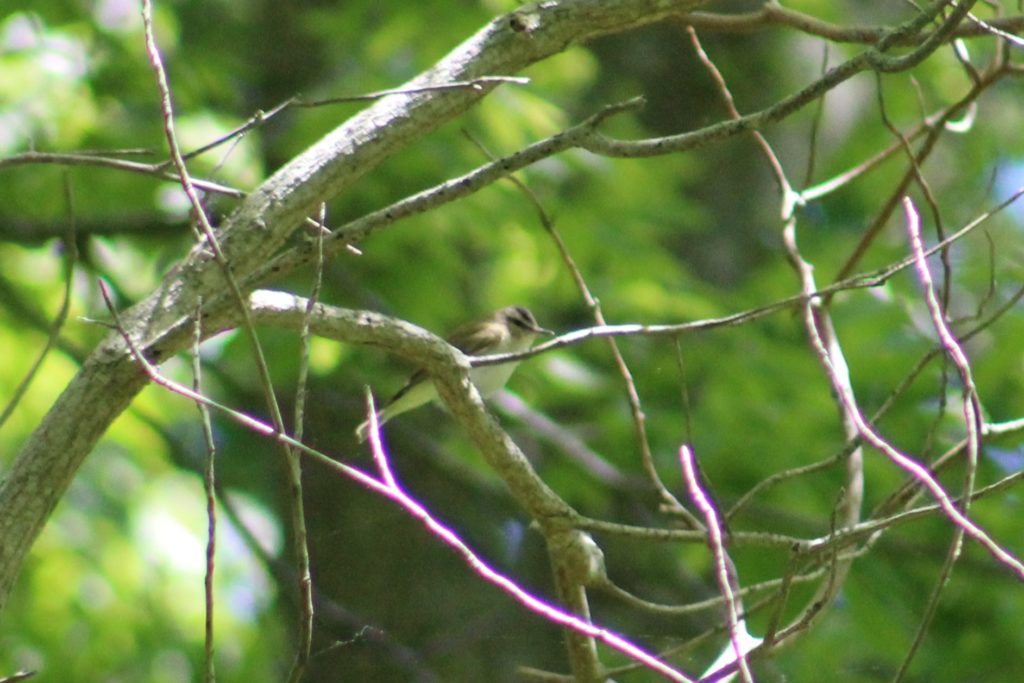


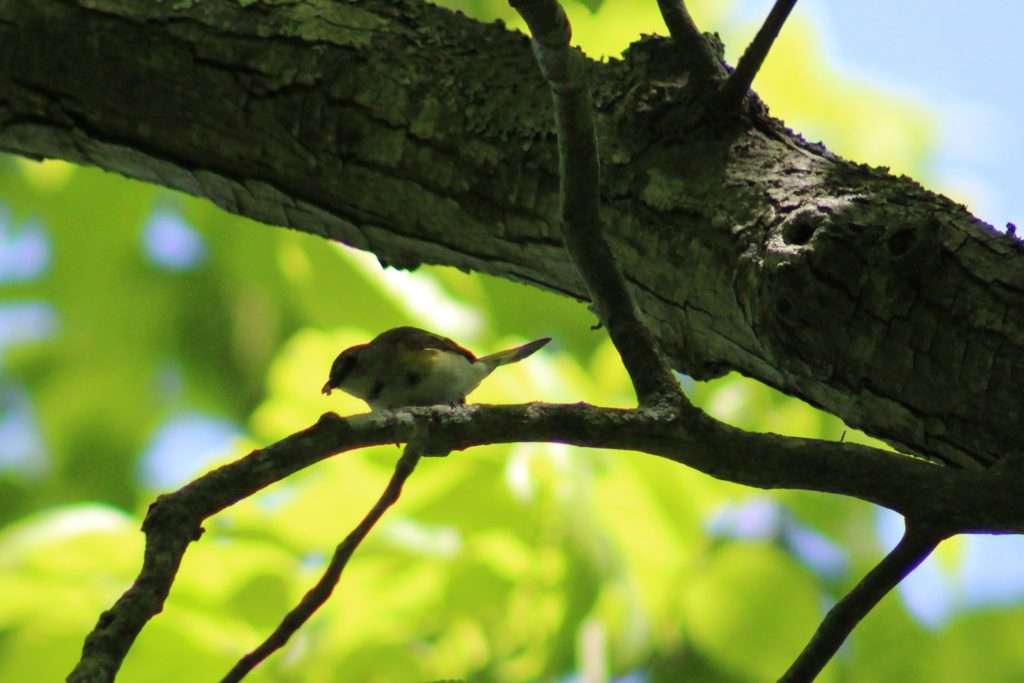
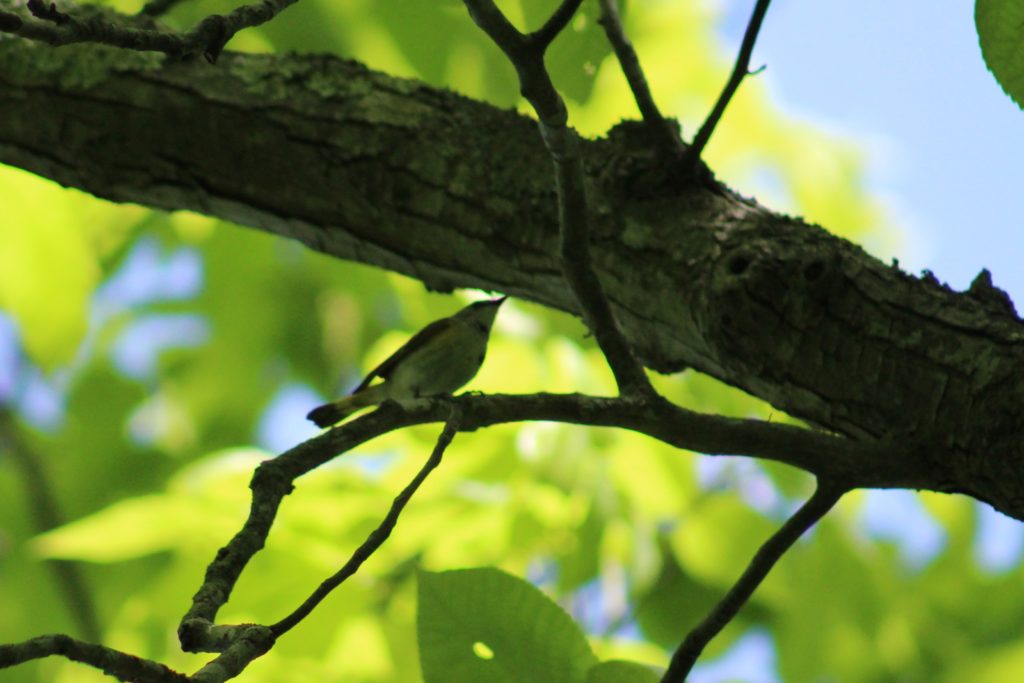
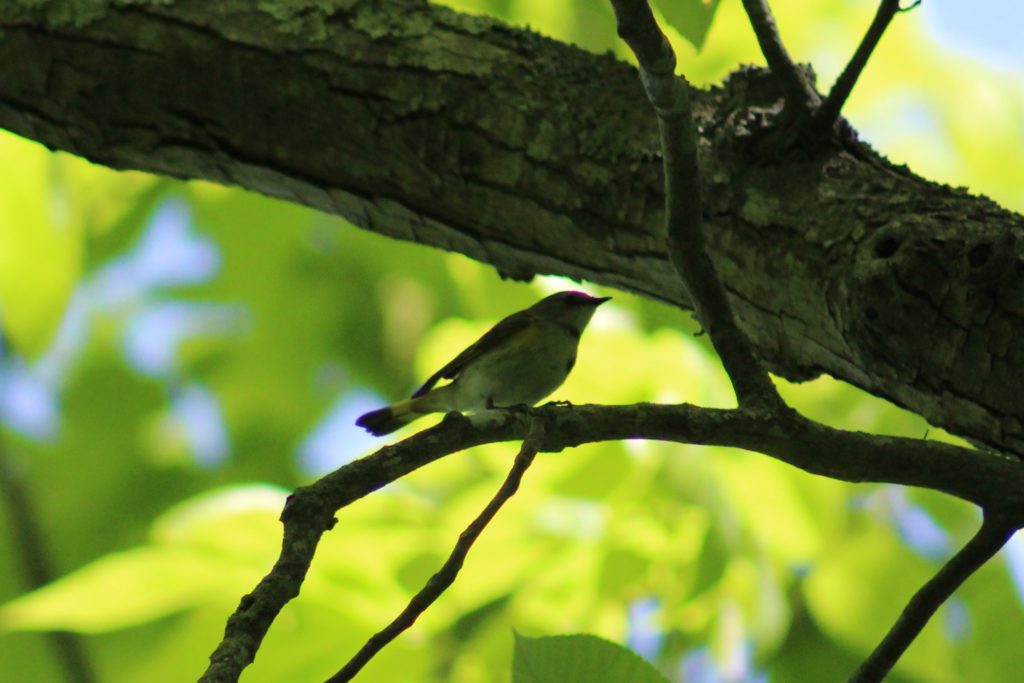

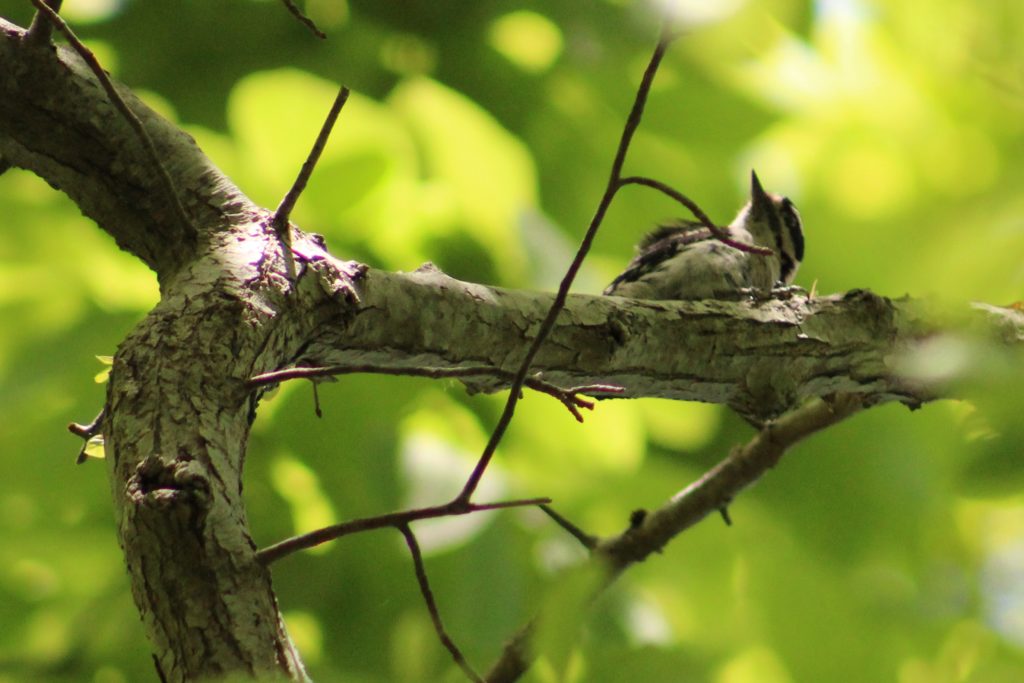
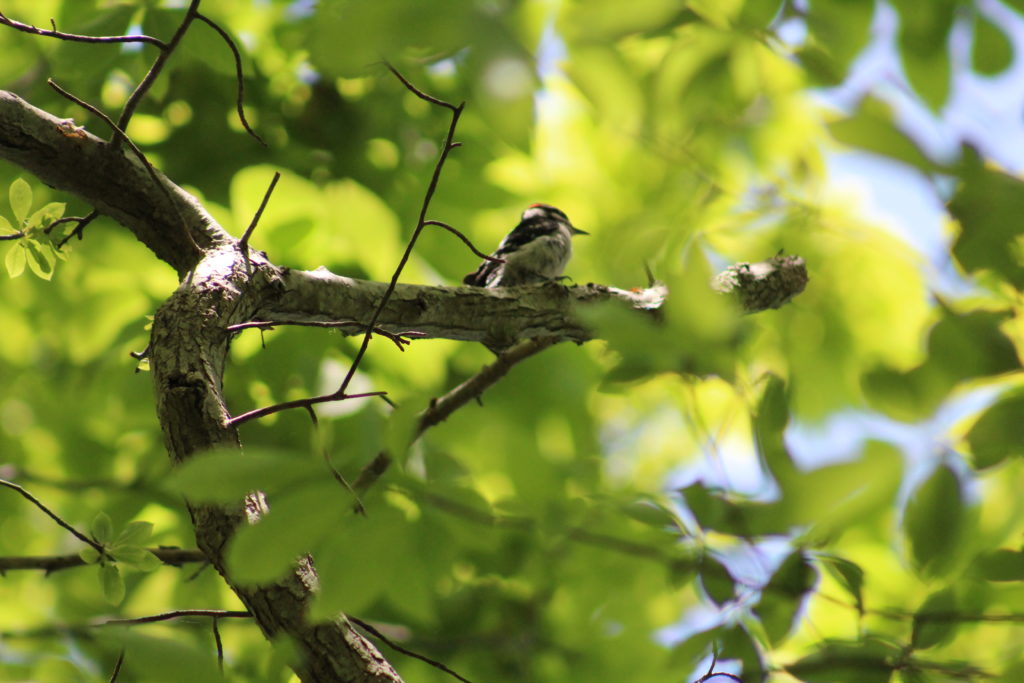
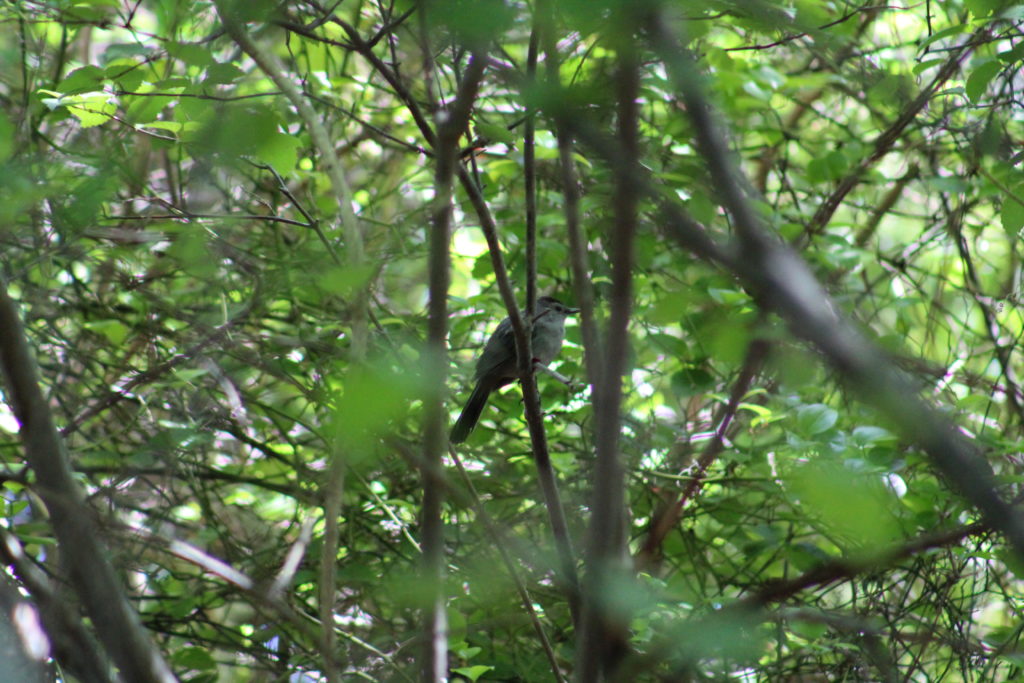
Big Reed Pond is a National Natural Landmark. “The National Natural Landmarks (NNL) Program recognizes and encourages the conservation of outstanding examples of the natural history of the United States. It is the only national natural area program that identifies and recognizes the best examples of biological and geological features in both public and private ownership. The program was established on May 18, 1962, by United States Secretary of the InteriorStewart Udall.”-Wikipedia.
I absolutely hate to say this but walking up on Big Reed Pond I was slightly disappointed. Of course, the water was beautiful rich blue and shimmering like glass under the beating sun, and in such heat, the water nearly screamed to us to come in for a dip. But, the amount of viewing area is very limited by the trees and tall grasses around the water. There is a small wooden dock that extends over the water’s edge for visitors to walk out and look around but the panoramic is still quite narrow. A pair of Mute Swans drifted along the water on the opposite shore but otherwise, there was no movement. No ducks, no geese, no frogs or fish jumping. Perhaps it was the building wind that was keeping things at bay, or perhaps I simply put too much expectation into birding around water. There was nothing wrong with the area at all, in fact, it was quite lovely, with a duck blind and several nest boxes. I guess I had just been hiking this trail with the pond being the goal, as I often do. Thinking, “there will be so much to see once we get to the water”-but when it does not work out that way I can not help but feel let down. Even though looking back the area was breathtaking.
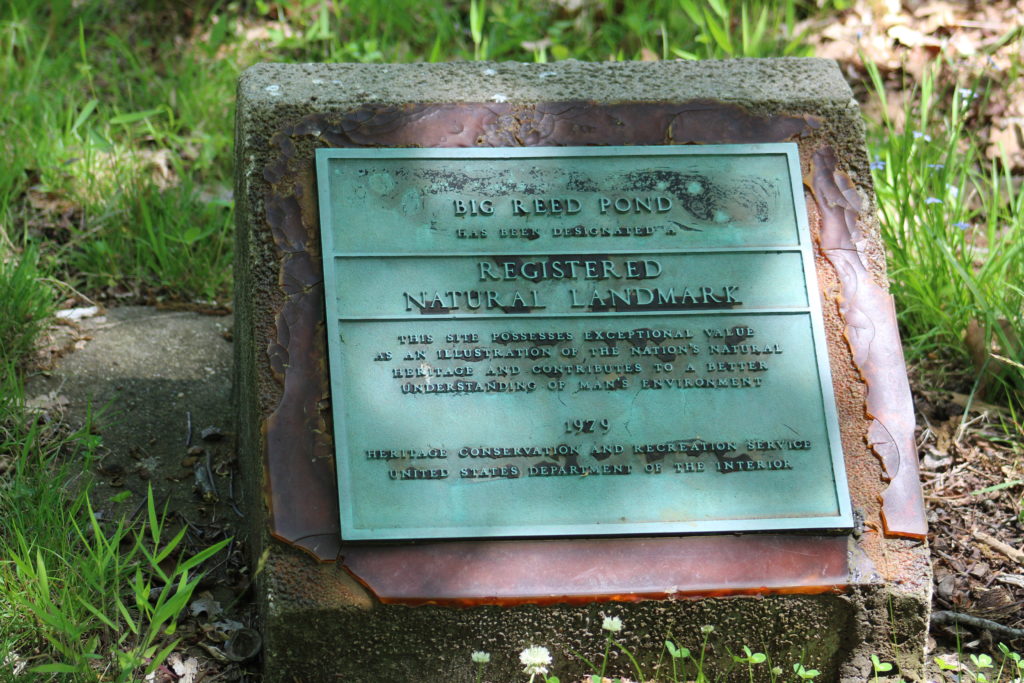
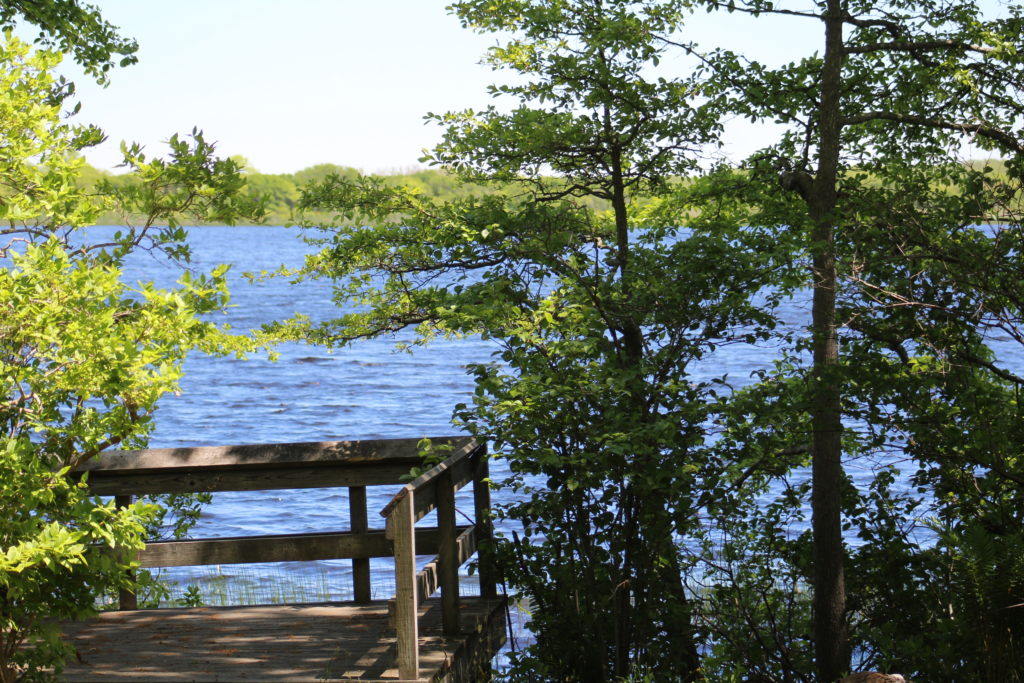
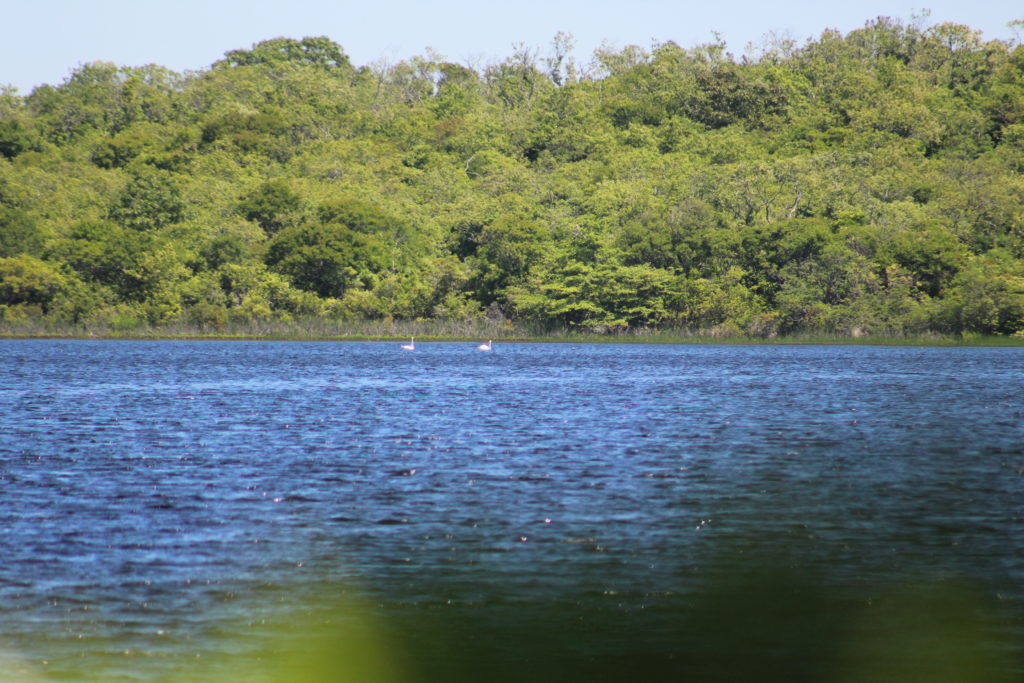
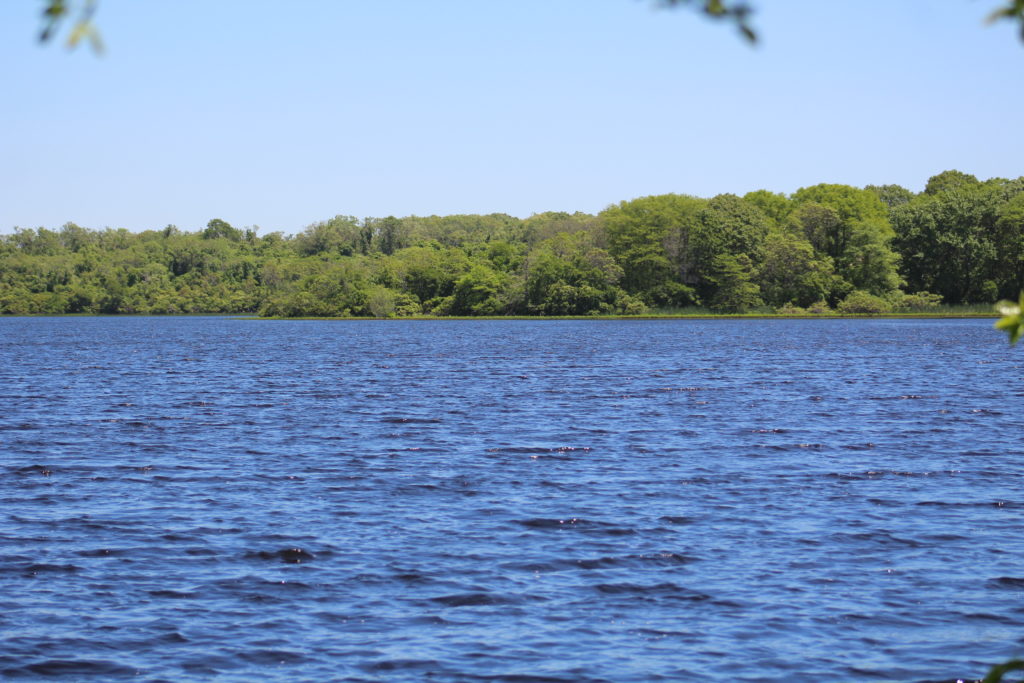
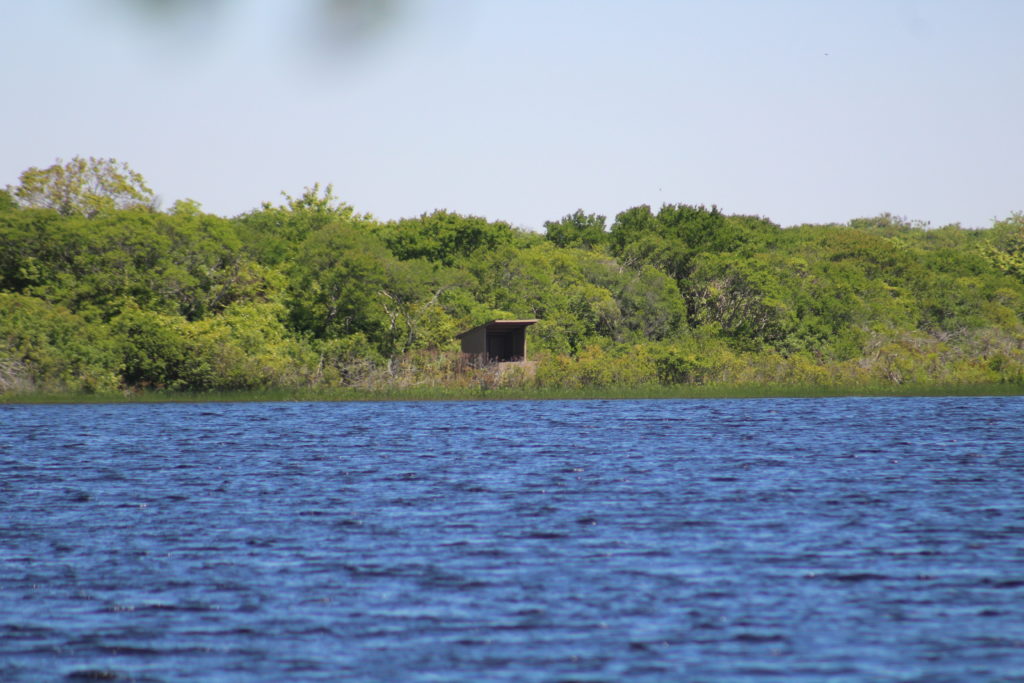
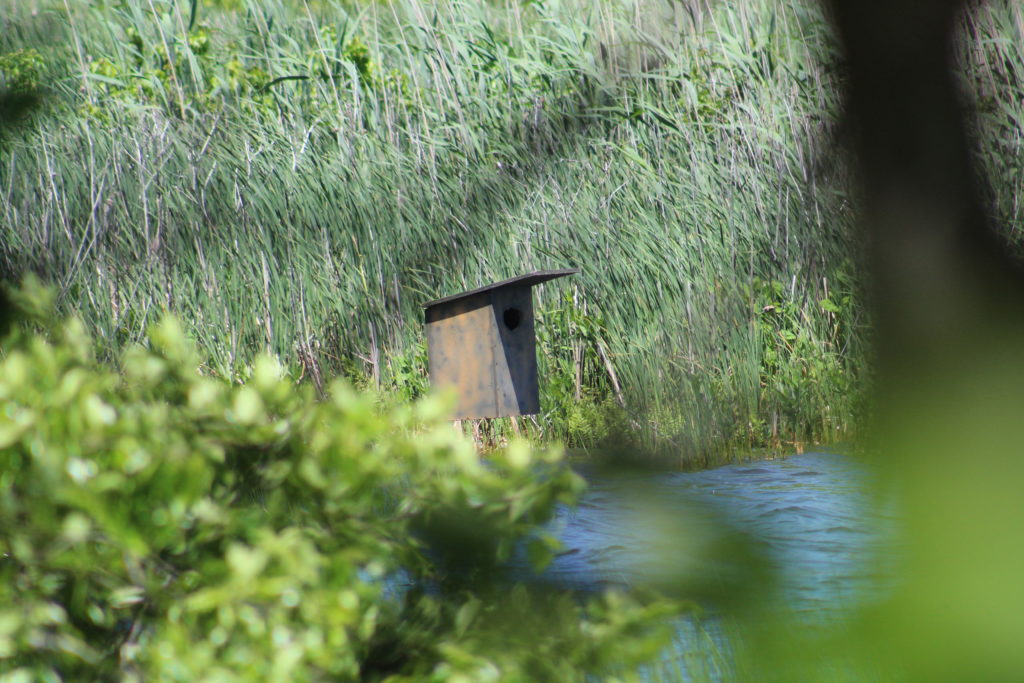
After a short, and much-needed rest at the pond, we headed back out on the trail to continue on our way back to the car. Gray Catbirds scurried about the floor while bright Yellow Warblers perched in the branches high above us. Again we heard the calls of Eastern Towhees from the shrubs around our feet and soon we came upon our first trail map. That’s right, out here in the middle of our trip we found the trail map! Better late than never I suppose. We found that so far we had been following the blue trail, which was a loop and would eventually lead us back to the car and was our original intention. However, thanks to this map we just ran into we discovered that we could easily add a short extension onto our adventure by picking up the black trail, which was also a loop and would drop us off right back on blue as we had hoped. Perfect! As many of you know by now I never want our adventures to end so an unexpected addition onto our trail was like finding money in your old coat pocket, a wonderful surprise!
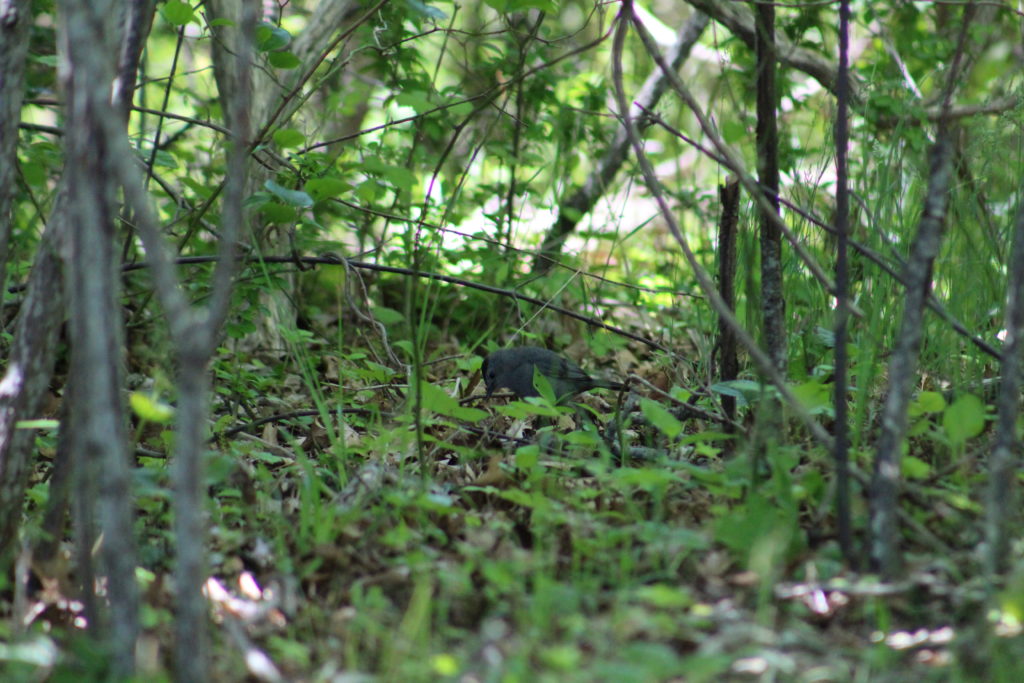
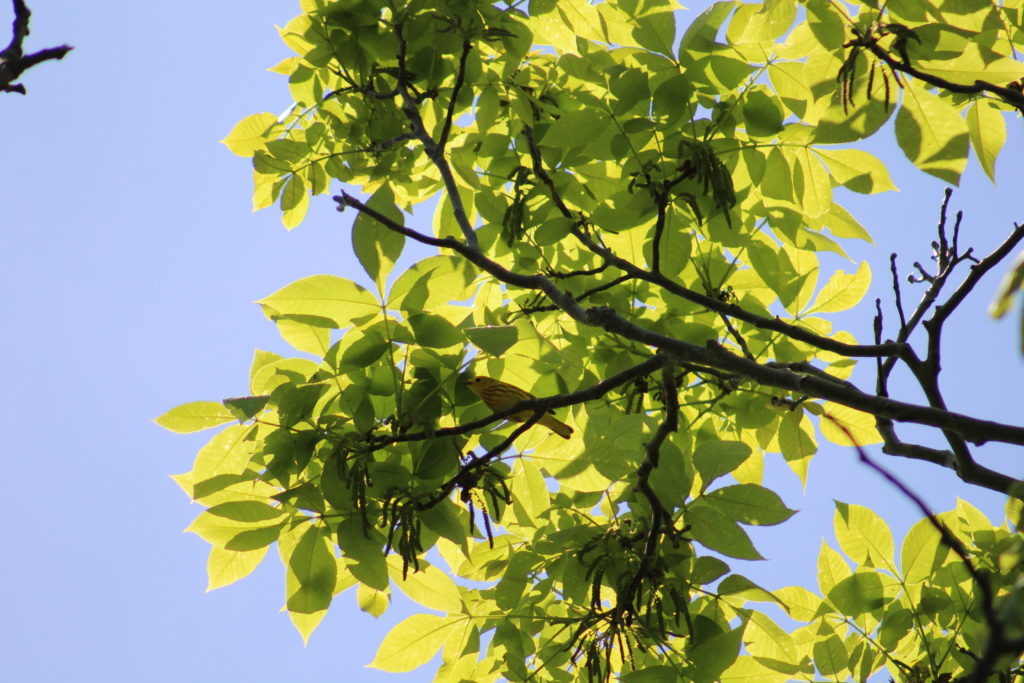
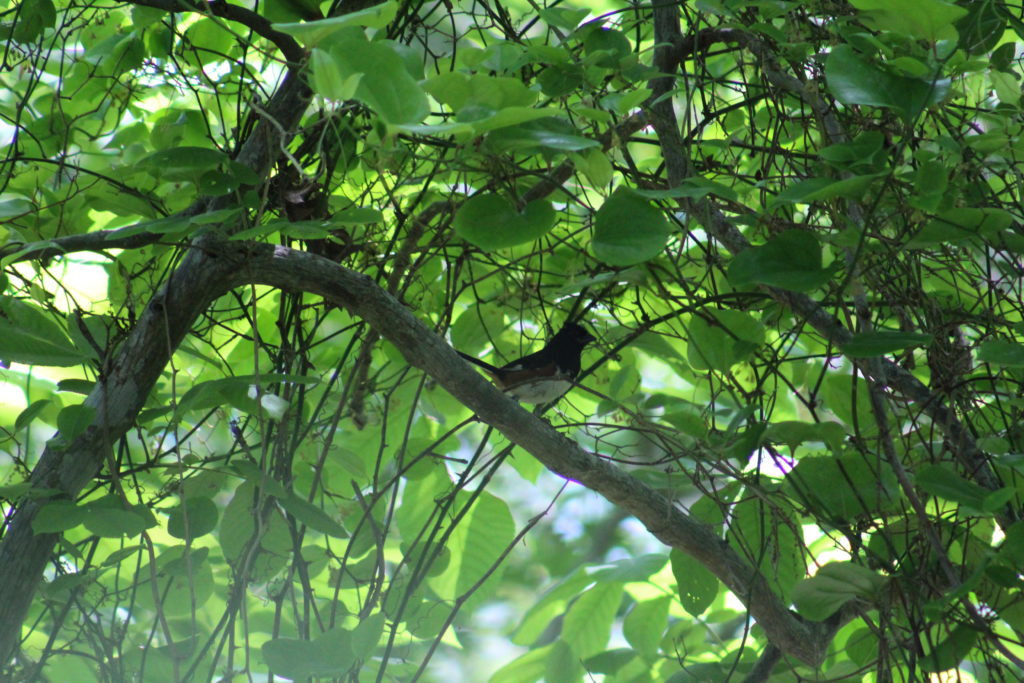
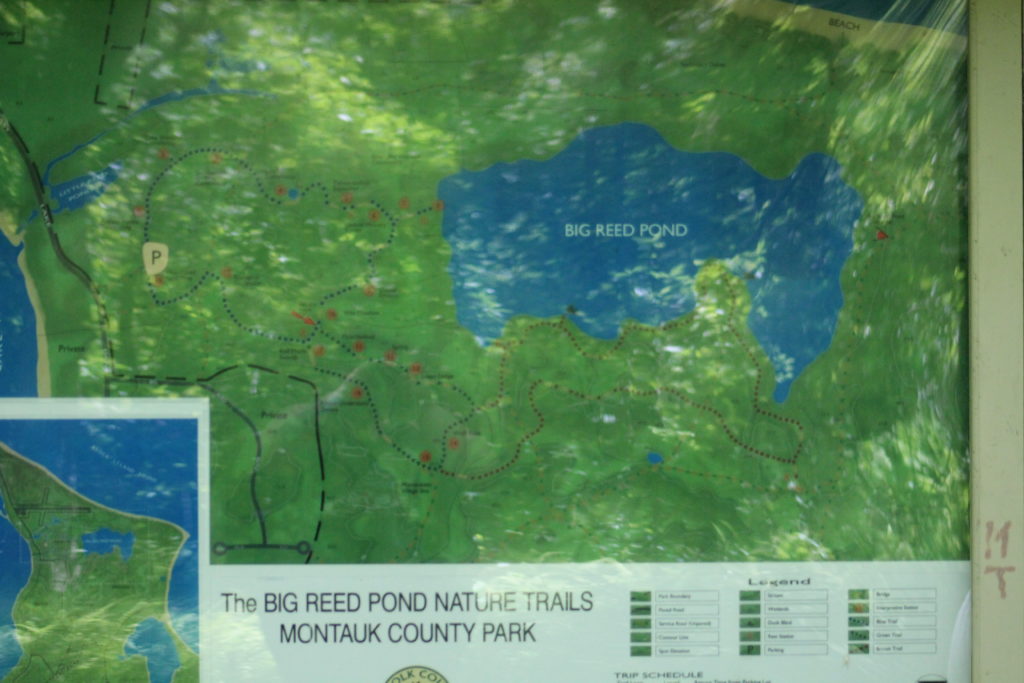

Hiking on, the trail continued to evolve between cleared dirt paths and winding boardwalks. Occasional benches sat neglected along butterfly strewn shrubs while certain visitors started to make themselves commonplace sightings; Gray Catbirds, Eastern Towhees, Yellow Warblers but suddenly in a small clearing I was able to spot something different. A bare tree ran through the sky like spilled ink across a page, and perched on one of its outstretched arms a lone Eastern Kingbird. This was not a lifebird for me but it is definitely one that I don’t find myself running into very often and am always happy to see. As I watched, arching my neck trying to manage a better photo Steven stopped me in my tracks, drawing my eyes to the ground. There in the sand lay a poor, tiny bat. Deceased and drying in the strong summer sun.
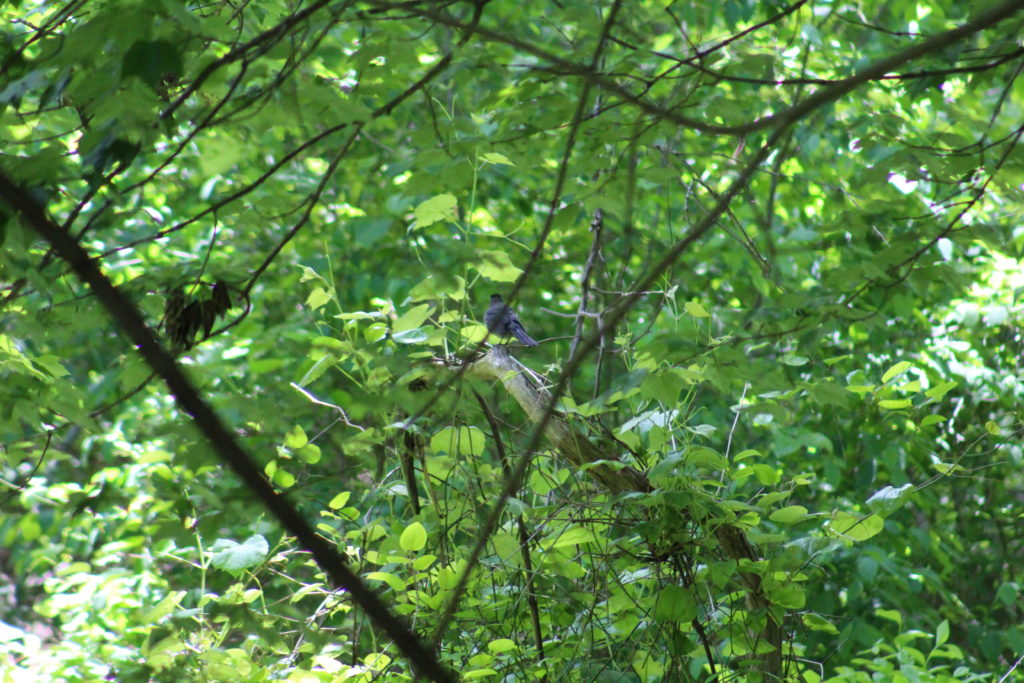
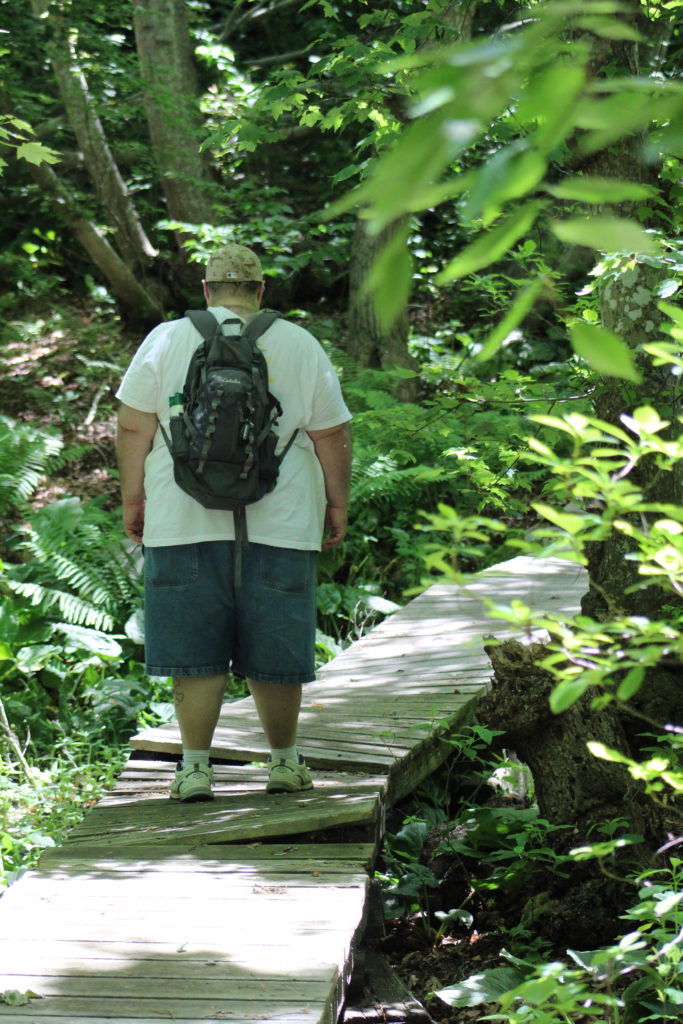
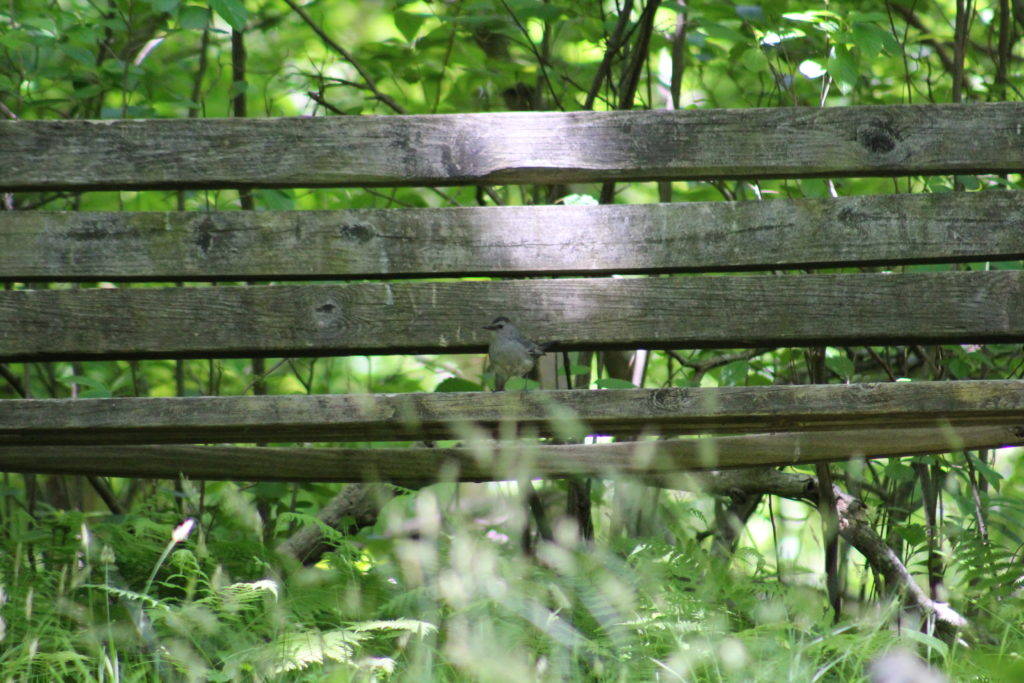
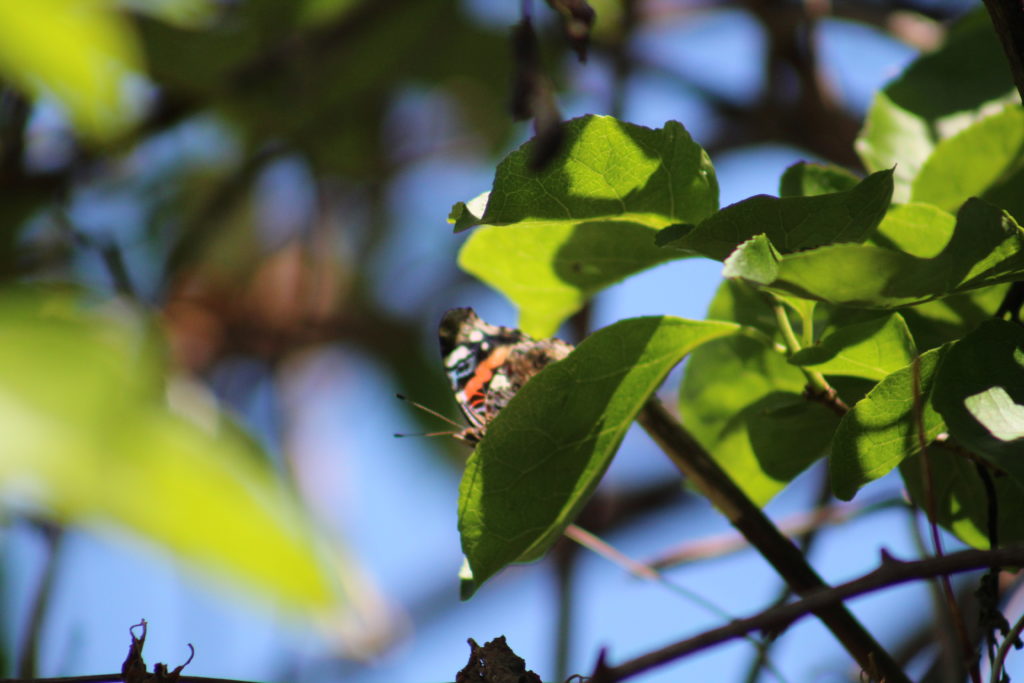
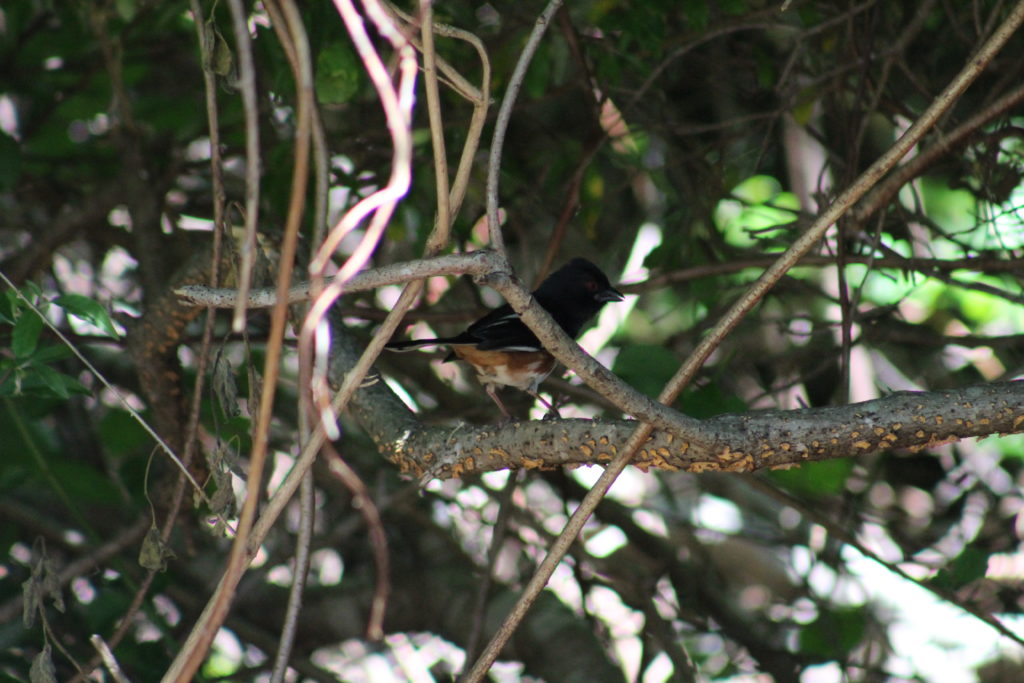
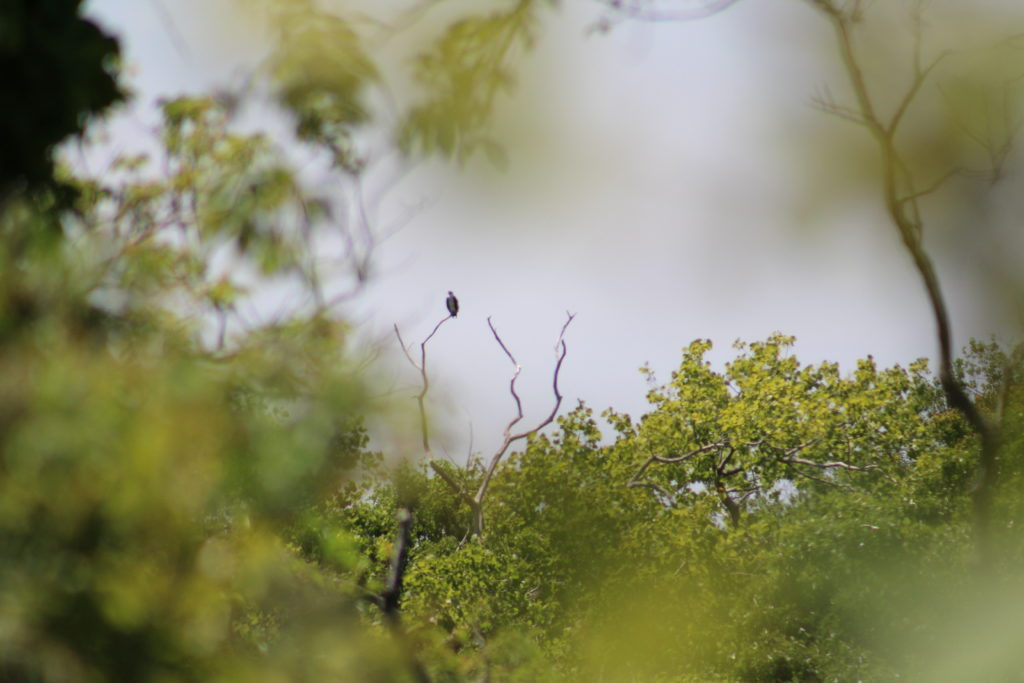
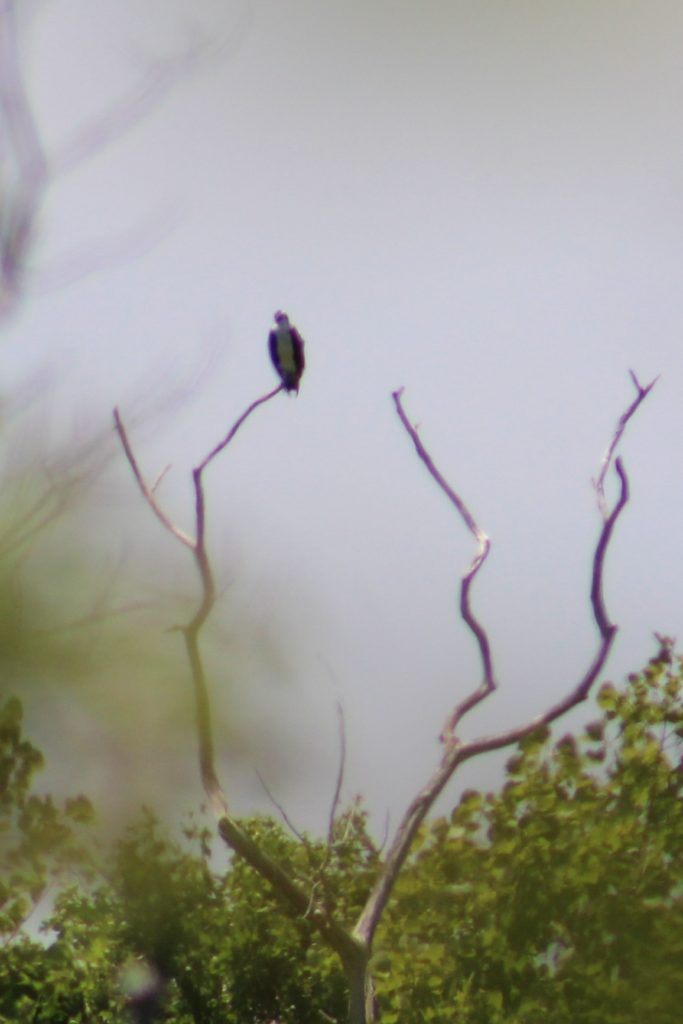
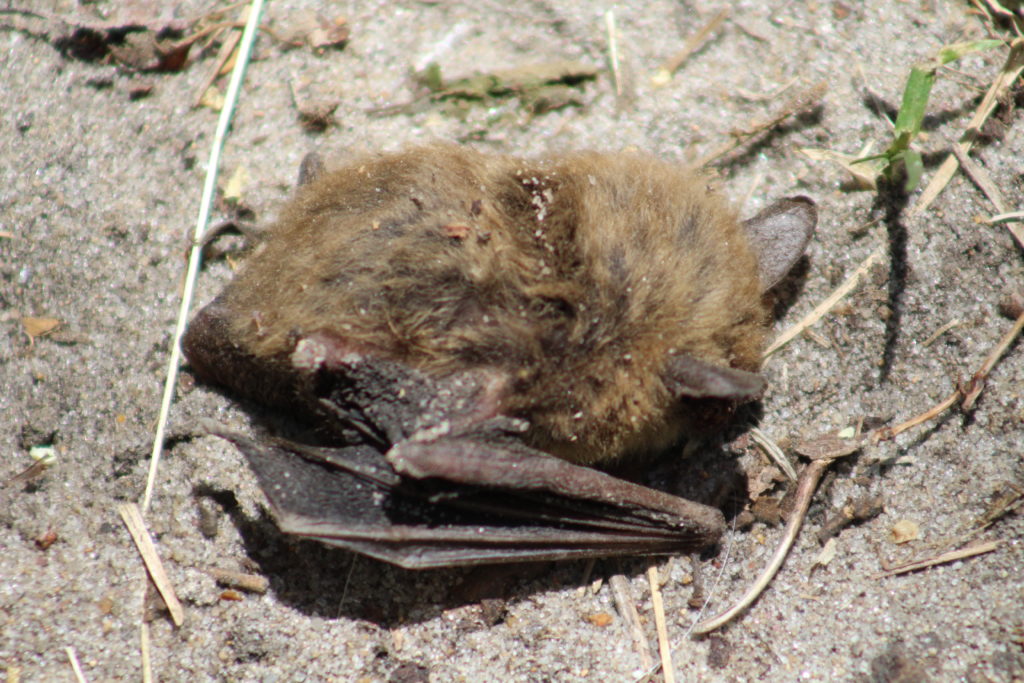
Hot and exhausted we arrived back at the car. Noticing we still had a pretty significant amount of time we decided to head back to the spot we had gone first, by the Third House, and spend a little more time looking around and taking in the views. Earlier we had noticed an area set up with some restrooms and picnic tables and this seemed like a perfect opportunity to wash up and have a little lunch.
Red-Winged Blackbirds perched in every tree, their songs echoing out in what seemed like hundreds. All around the picnic area stood nest boxes which made for some optimal viewing while we rested. Song Sparrows hopped about, hoping for some fallen crumbs while a large Turkey Vulture circled the sky above the historic house. Northern Mockingbirds walked around the sprawling grass of rolling hills in the distance while Barn Swallows danced through the air above them. After a good rest and some light lunch, we set off exploring a small path through the lawn, a small stream, and a garden.

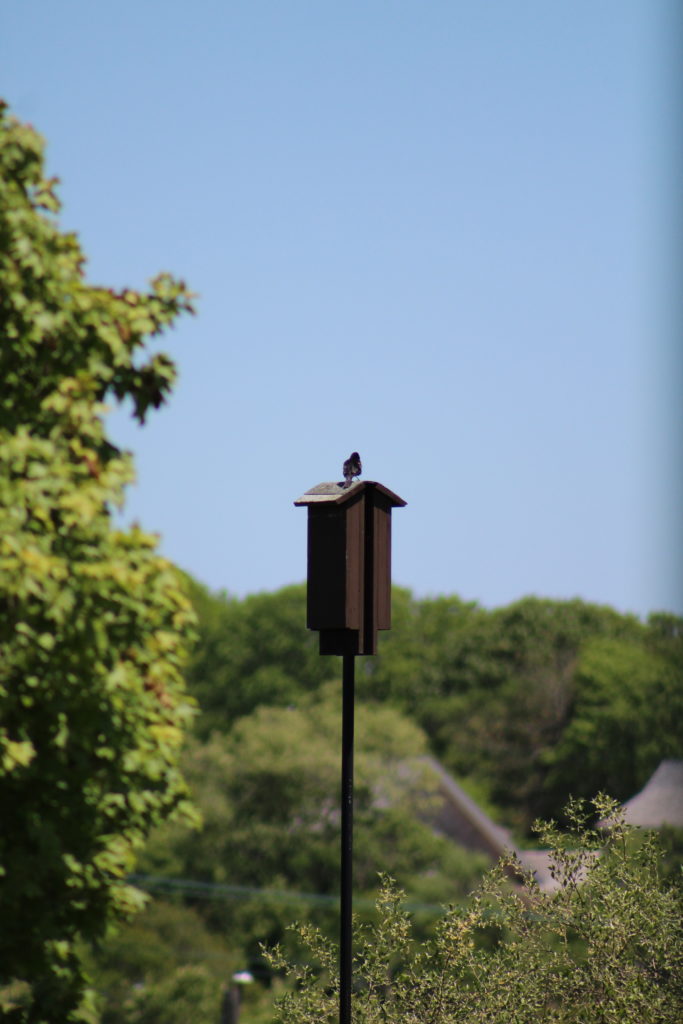
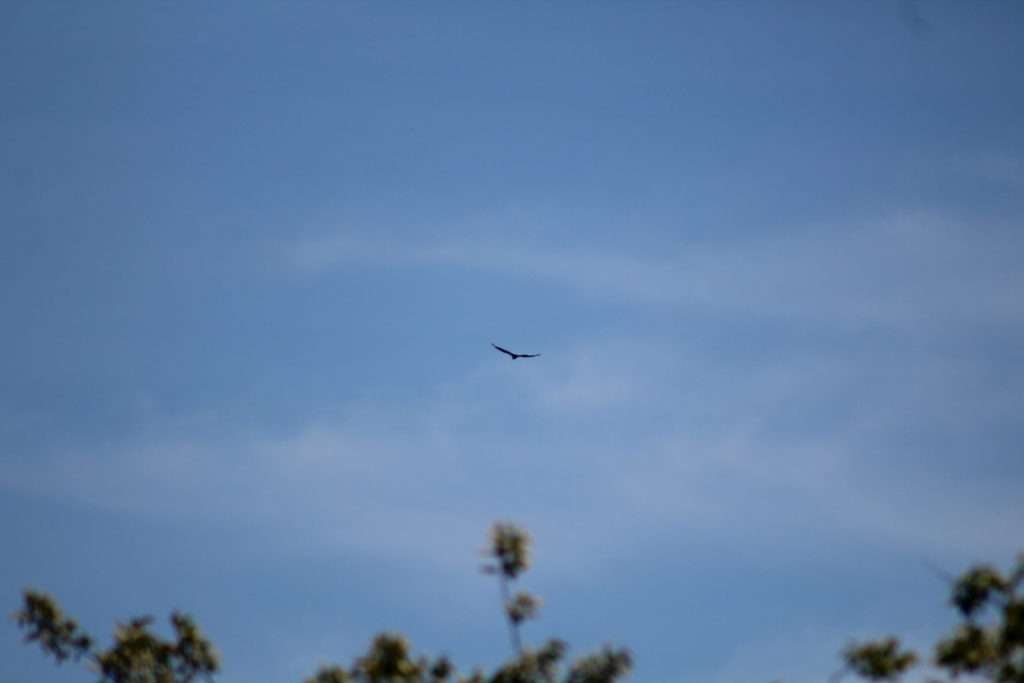
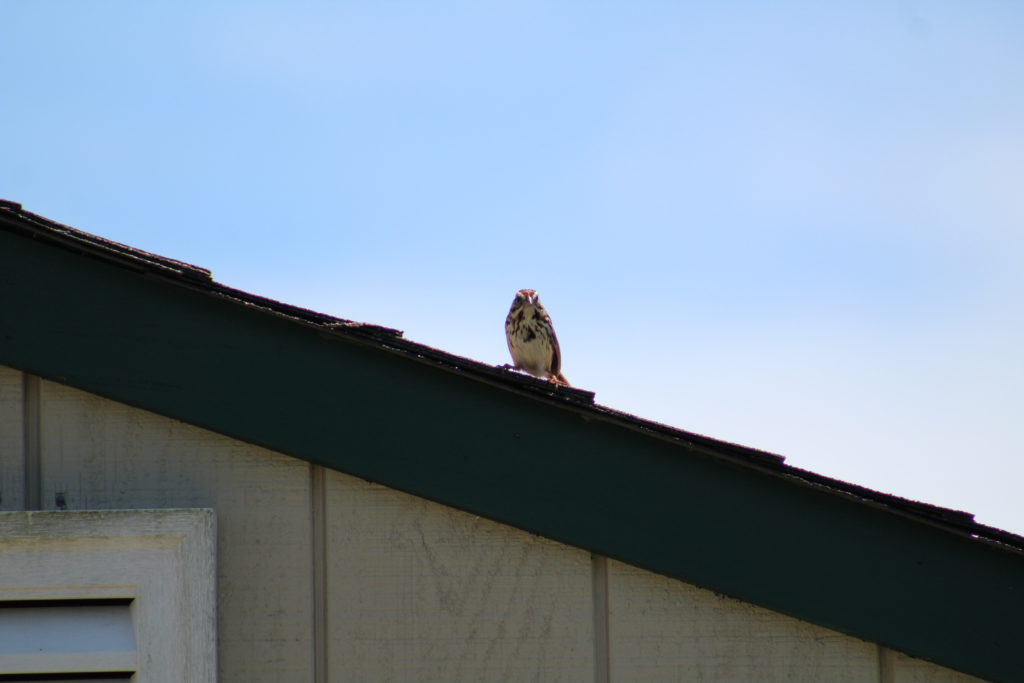
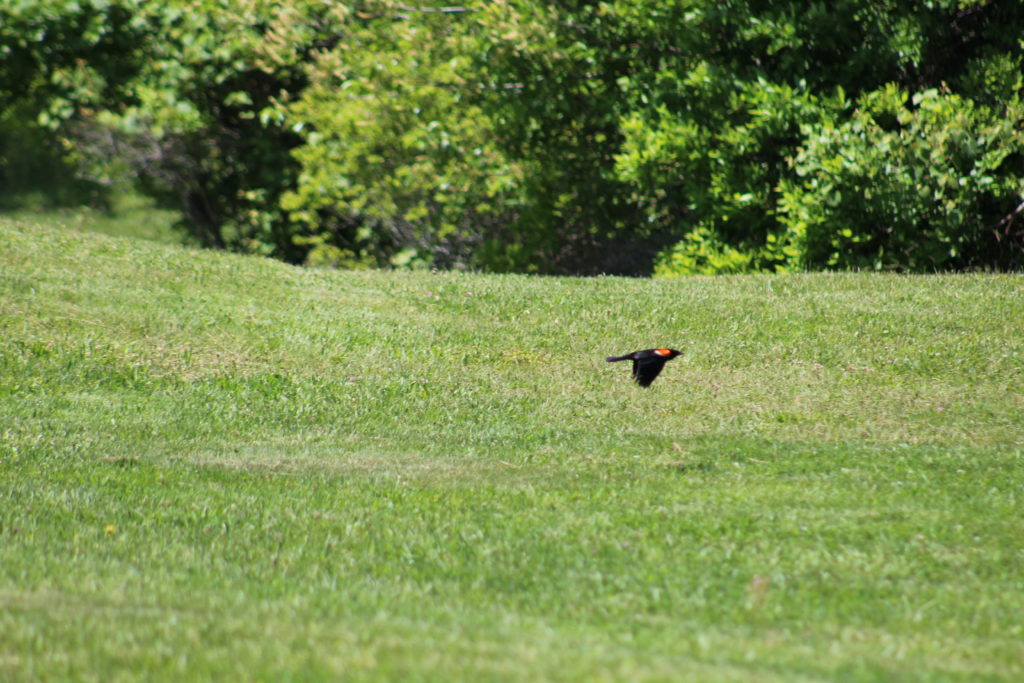
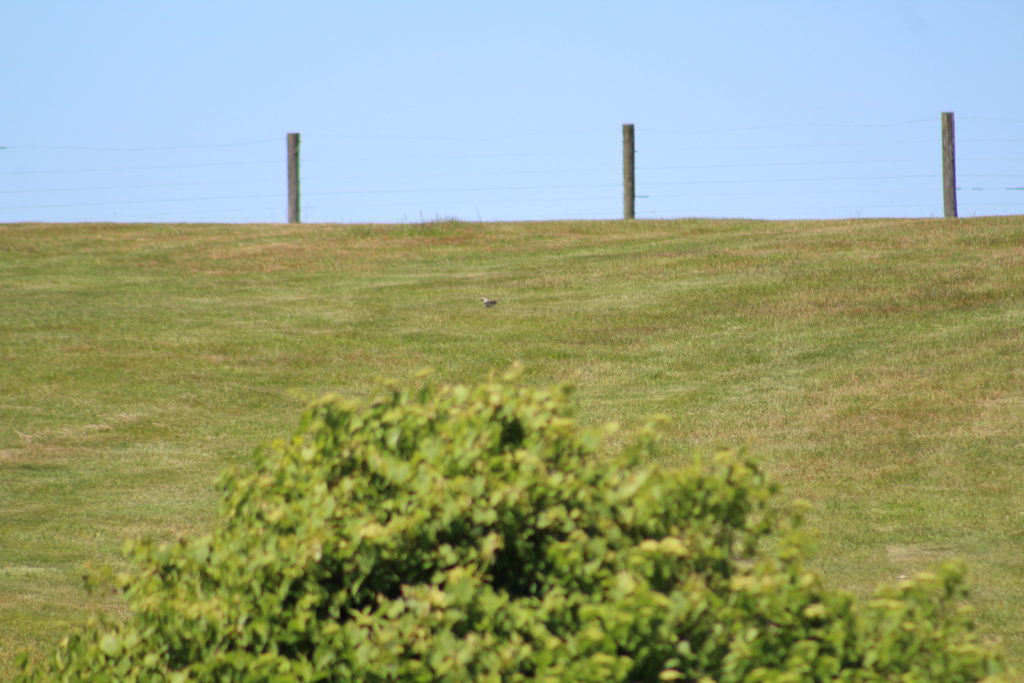
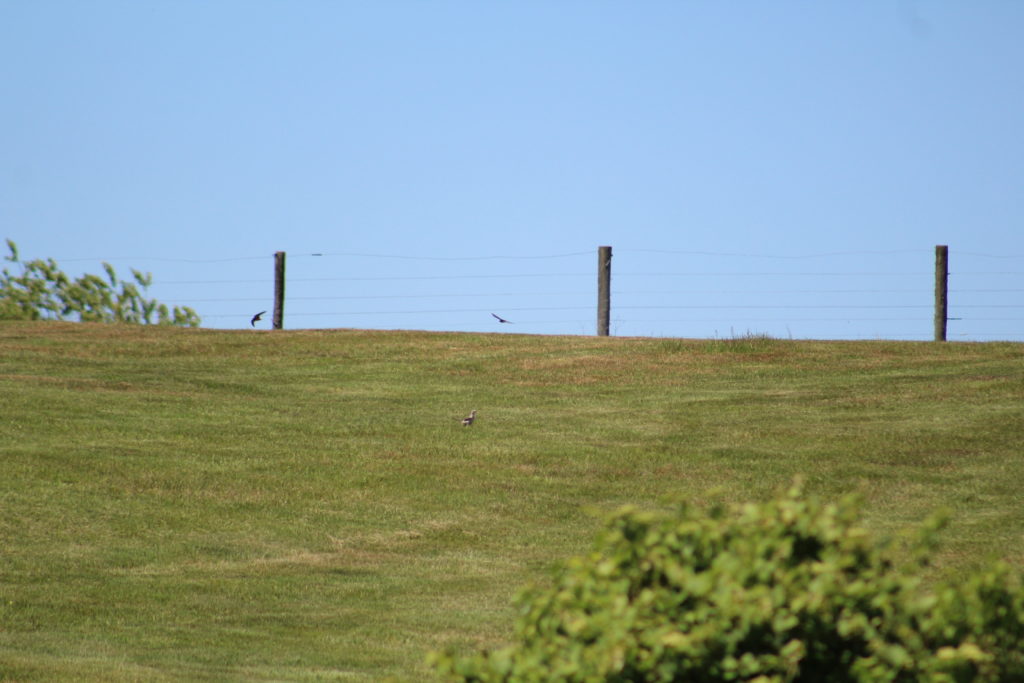
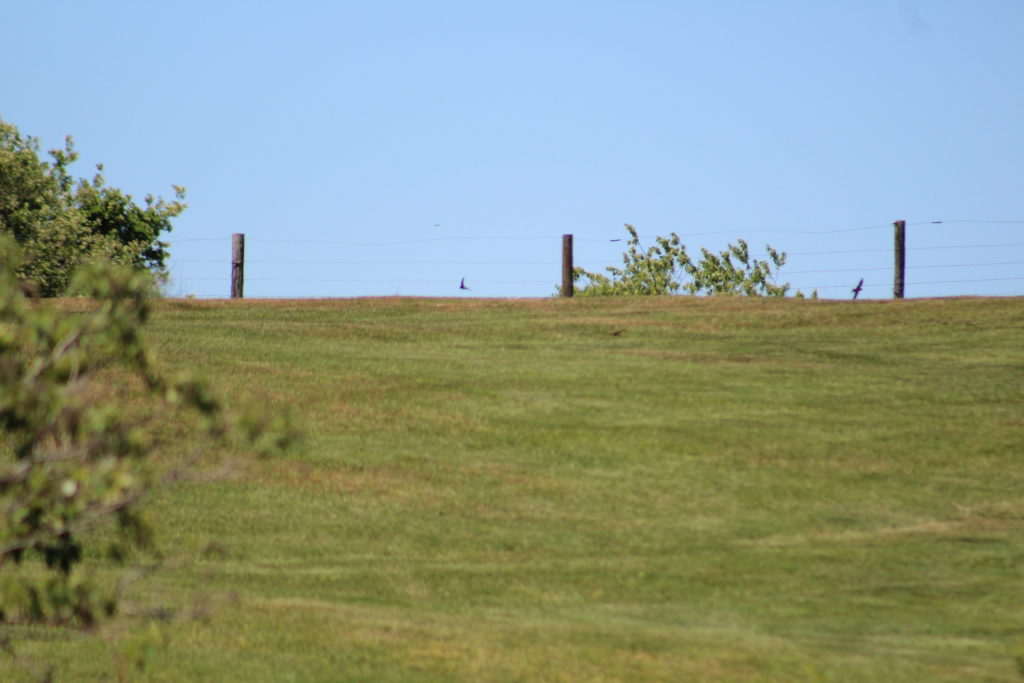
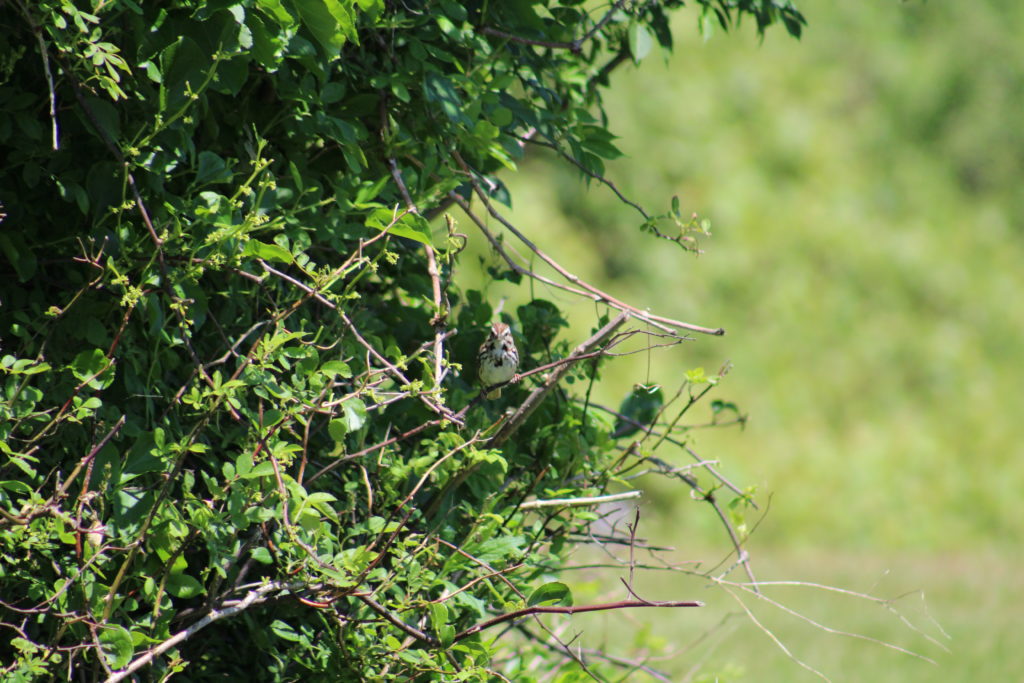

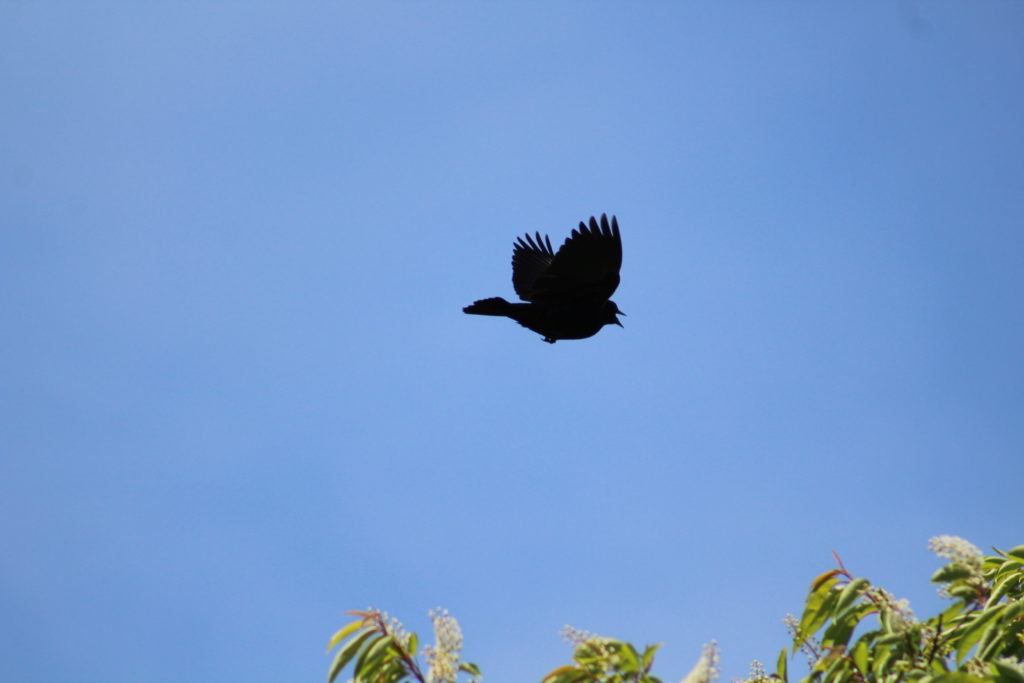

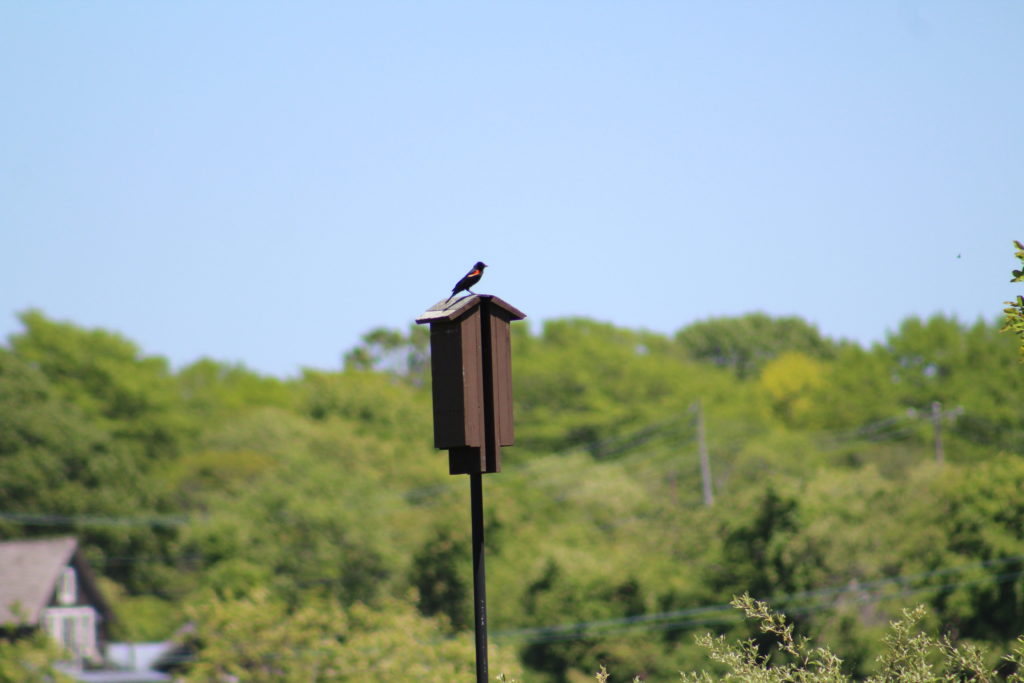
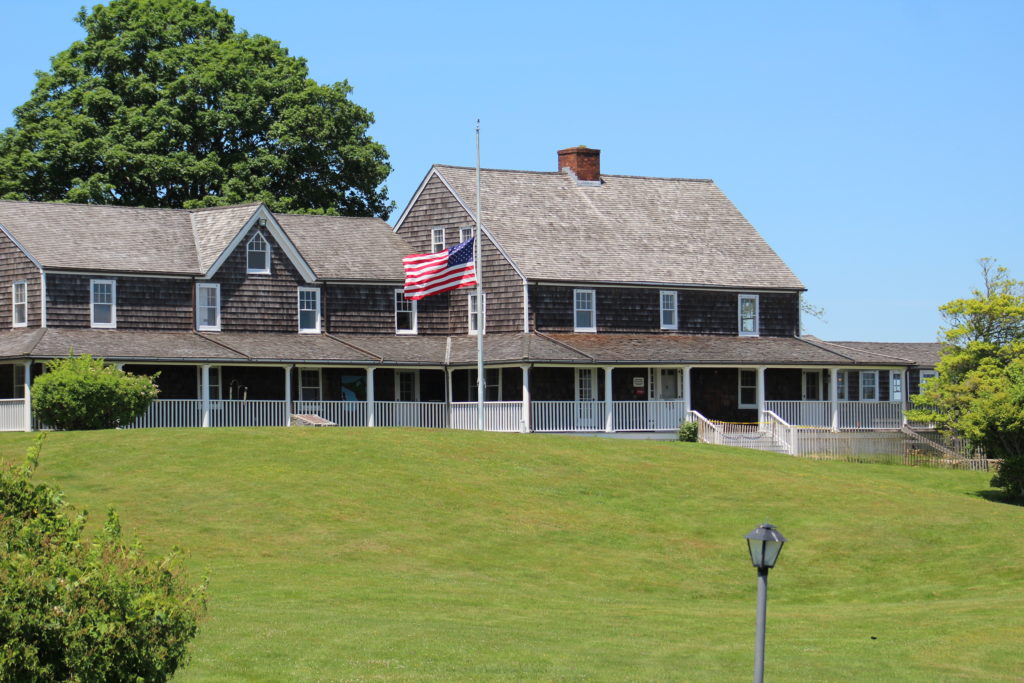
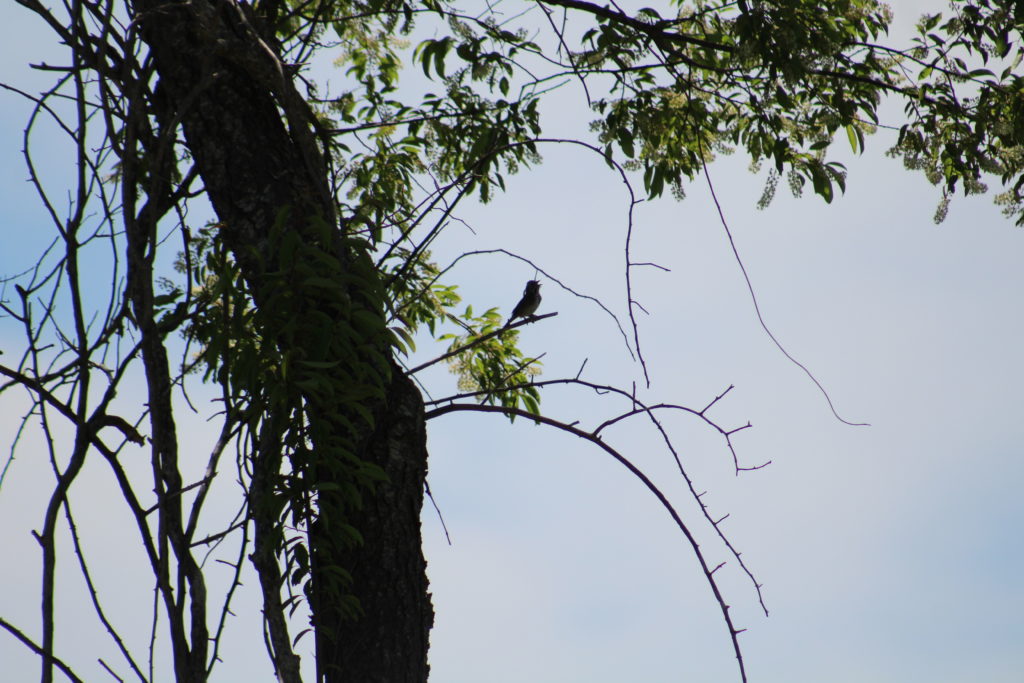



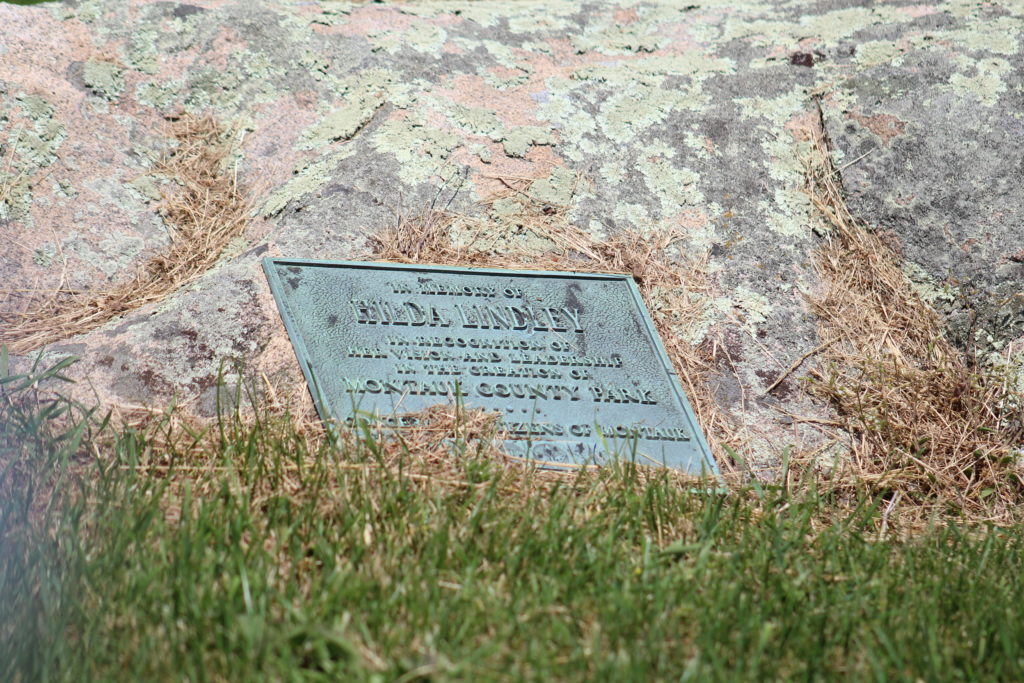
Eventually, despite how much we would have loved to stay, it was time to get going to my family reunion and we had to pack up and move on. This was a very beautiful park and I am so glad that we had the chance to go and enjoy it. Sadly I do not get the opportunity to get out to the forks as often as I would like but I would definitely say we made the most of the opportunity. I recommend having a clear plan of what you hope to see before visiting this park since it is so large and things are quite spaced out. At the end of the day though, no day in Montauk is a bad day, right?
I hope you are all getting out and enjoying this amazing weather we have been having lately. With all this virus craziness and everything around us being closed, it is the perfect excuse to get out and do some exploring! Stay safe, stay healthy, and until next time my friends, Happy Birding!
For more Long Island Birding content, visit my Facebook Page!

